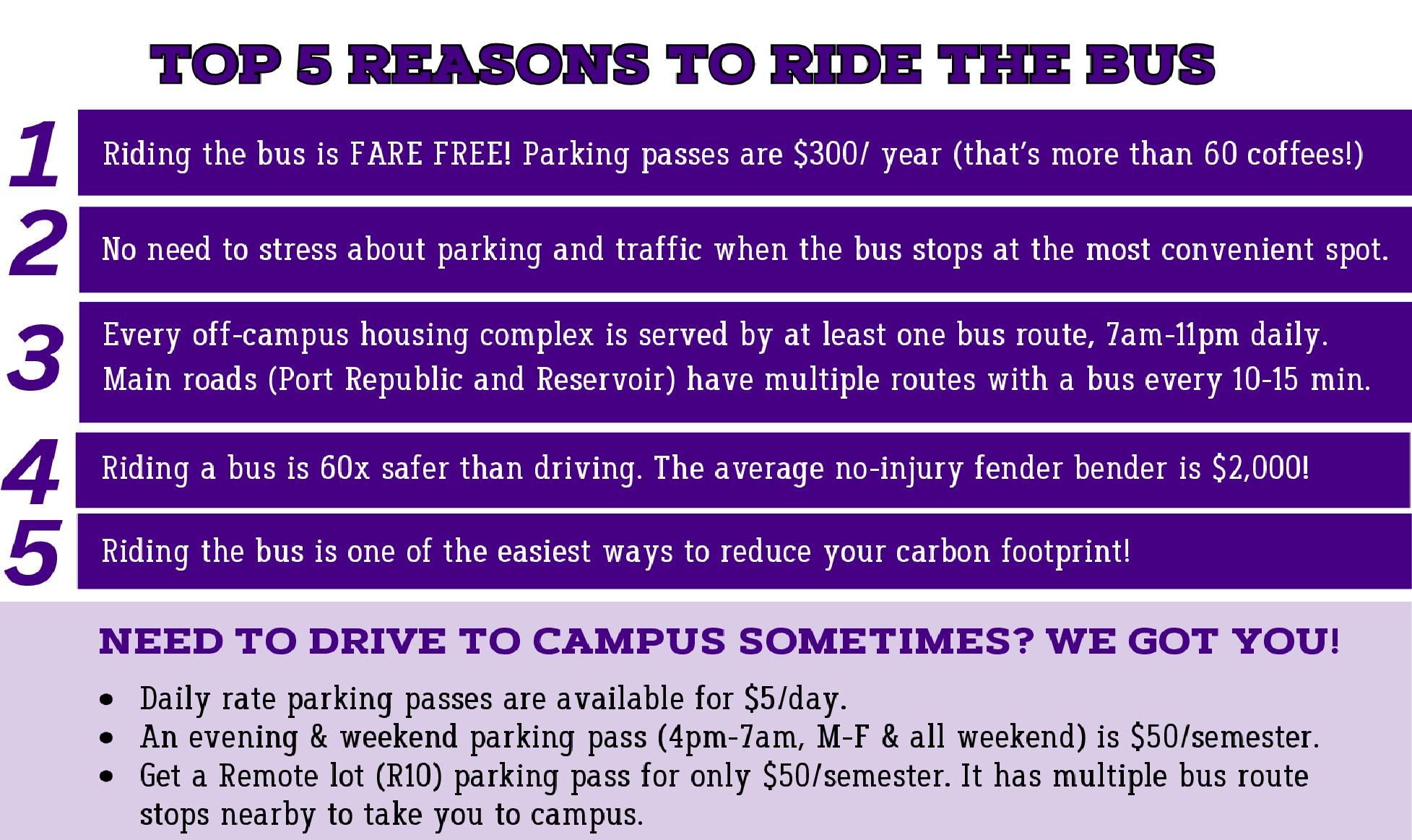







On the cover
For those who crave a little magic in the muggle world, look no further than JMU’s quadball team. Inspired by quidditch from “Harry Potter,” these stick-riding athletes have made the game their own.

Mauser & Libby Addison









For those who crave a little magic in the muggle world, look no further than JMU’s quadball team. Inspired by quidditch from “Harry Potter,” these stick-riding athletes have made the game their own.

Mauser & Libby Addison
By JOELLE MCKENZIE
The Breeze
JMU community members have continued contributing to relief efforts weeks after Hurricane Helene brought flooding to southern parts of the Appalachian Mountain range, including an area housing JMU rival App State in Boone, N.C.
One example of this is the Dukes Support Mountaineers fund, which JMU alumni Joe Showker (’79) and Debbie Showker (’78) started through the Community Foundation of Harrisonburg and Rockingham County to raise money to support App State.
Joe Showker is the son of Zane Showker, a former Board of Visitors (BoV) Member and Rector, the namesake of Showker Hall and Showker Field.
Before the Showkers formed Dukes Support Mountaineers, Joe said he contacted JMU to start a fund, but the university couldn’t “raise money for another institution and pay money to that institution.”
As of Oct. 17, the fund has reached $63,150 in donations for relief efforts from 628 donors, Joe wrote in an email to The Breeze.
The contributions were “sent to the disaster relief fund at App State” and aided in student and faculty relief, he said.
“A lot of their faculty lost their homes, a lot of their off-campus students lost rental properties
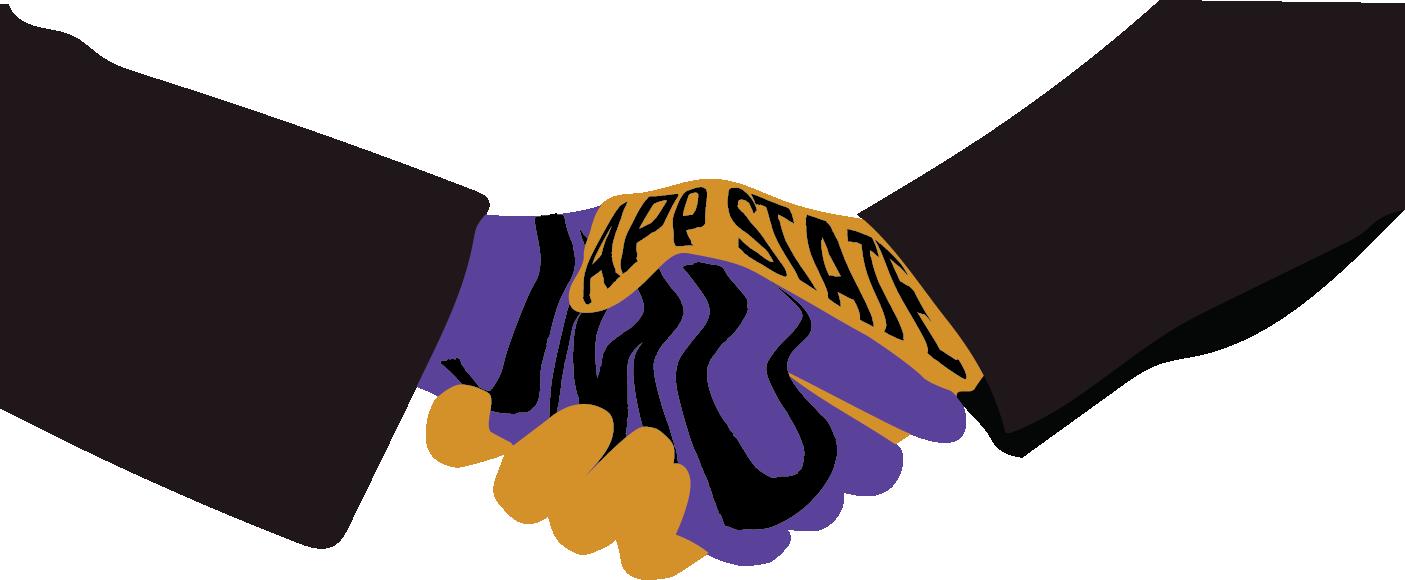
and residences, so a lot of that money has gone to helping them, literally, have a place to live,” Joe said. “We’re very appreciative of the response from the JMU nation.”
The fund began accepting online donations Sept. 30, after flooding occurred, and will remain open until Dec. 1.
“It’s a tribute to the JMU brand and the JMU nation and to JMU’s benevolence,” Joe said. “It’s a tribute to our university that they would give and respond in such a huge manner to another university’s needs.”
Some academic buildings at App State faced significant water damage from flooding; one building lost power. However, the residence halls and its dining hall remained intact and open. The dining hall was open to the local
community for free meals, according to an article from Appalachian Today.
According to a Breeze Instagram poll, 25% (26 votes) of respondents said they’re current JMU students who were involved in providing relief to those affected by Hurricane Helene.
App State resumed classes on Oct. 16, about two weeks after Helene hit, according to an article from WXII 12 News.
JMU geomorphology professor L. Scott Eaton said the places affected by flooding will “heal over at some point.”
“You’ll go back to these places in 30 years,” Eaton said. “You can’t even tell that the events happened because the trees have recovered, the vegetation has come back strong and many of the scars have begun to heal.”

Eaton said the impact of the flooding is “enormous compared to previous floods” in the central and southern parts of the Appalachians. “No matter where you live, there’s going to be a hazard,” Eaton said. “It’s wise for each person, no matter what their walk of life is, to become educated about what those hazards are.”
CONTACT Joelle McKenzie at mckenzjl@dukes.jmu.edu. For more coverage of JMU and Harrisonburg news, follow the news desk on X @TheBreezeJMU and on Instagram @BreezeJMU.

By DRAKE MILLER
The Breeze
“Javier
Calleja said he was inspired to run for city council because he “wanted to have somebody who could work with both parties, Democrats and Republicans alike,” due to both parties having “great ideas.” He added that no matter what happens in November, “we are all Americans.”
“I want kids to be able to talk to their parents,” he said. “If one kid is Democrat or Republican and their parent is from the opposite party, they can sit down at Thanksgiving and remember that they love each other.”
Regardless of the election’s outcome, Calleja said just being able to run is “really a win.” He said the fact that someone of his background — “a little boy who lived under a bridge at one point” — is in the United States surrounded by support, is reason enough to feel grateful.
Calleja’s four major priorities for Harrisonburg are fostering first-class education, ensuring communities remain safe, promoting smart money management and ensuring Harrisonburg is a “place of hope” for all, according to his campaign website.
Calleja: If taxes are raised, do so accordingly
Calleja said one of his priorities is money management, specifically concerning Harrisonburg taxes and businesses.
“I want to make sure that, if we’re going to raise taxes, we’re going to raise taxes accordingly,” he said. “If we continuously raise
taxes to get revenue, it’s going to be pushing down people in poverty further into poverty.”
If Harrisonburg were to be an attractive city for businesses, Calleja said these businesses would be less likely to close doors and relocate to counties where they would pay less in taxes.
All of this, Calleja said, can be achieved through collaboration and problem-solving across political differences.
“If we actually create a system of collaboration between Democrats, Republicans and Independents, and we push policies and smart planning in place ... then eventually, people are going to start to feel some relief,” Calleja said, adding that he plans to focus on giving relief to those with less resources and income.

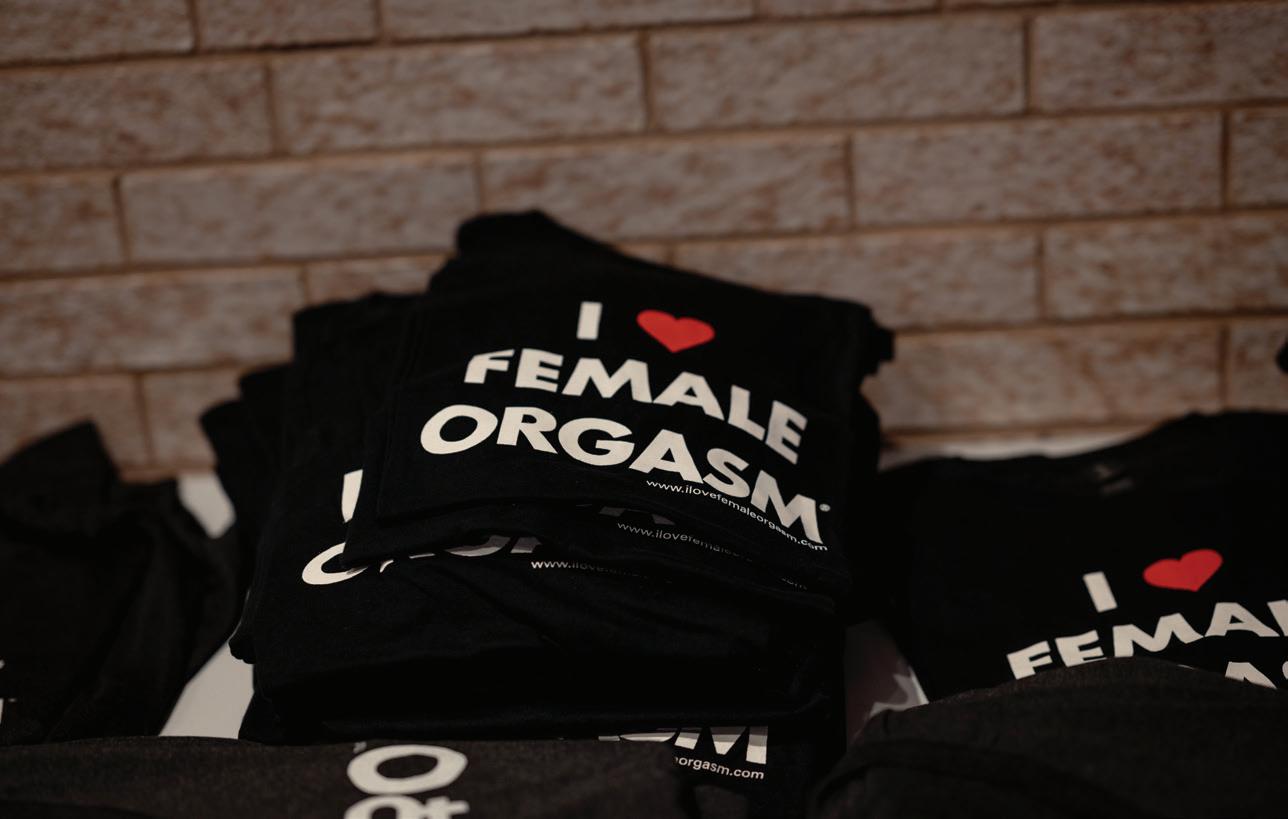

from CALLEJA
, page 4
Safety prioritized in Calleja campaign
One of the things Calleja discovered by knocking on doors in Harrisonburg, he said, was that many teenagers were responsible for caring for younger siblings.
“That is worrisome, because now we’re putting our kids in harm’s way,” he said. “That’s another reason I’m running — for safety.”
On the topic of safety, Calleja said most people think of policing, which is only one element of safety.
“Getting control of taxes is also safety,” he said. “Because then parents maybe don’t have to work as much, and one of the parents can be with their kids.”
First-class education makes Harrisonburg a “place of hope”
Calleja said he hopes if Harrisonburg provides a first-class education, the kids growing up here can “create the next businesses.”
“If we are able to create a system in which you graduate and you want to go and buy a house, you can,” he said. “Right now, you don’t have affordable housing.”
Calleja added that housing, grocery, transportation and insurance costs are rising, making it difficult for many Harrisonburg residents to get by.
“Harrisonburg is beautiful right now, we’re not saying that everything that’s being done is wrong. It would be dishonest for me to say that,” Calleja said. “But in the current condition, some people are selling their homes and moving because they’re tired of paying the taxes they’re paying.”
By ISABELLA DUNN & ELLA TEELER contributing writers
JMU welcomed Lindsay Fram and Marshall Miller back to the Wilson Hall Auditorium for another interactive discussion on sexual wellness — this time, with the primary focus on the female orgasm and what they referred to as “our orgasm superhero: Clitoria.”
This Tuesday event, titled “I Love Female Orgasms,” was one in a series of sexual wellness talks organized by JMU’s Panhellenic Council, including the Sex in the Dark event held on Oct. 1 that enabled students to learn about sex in an anonymous environment. I Love Female Orgasms took this education one step further and discussed prioritizing pleasure during sex through educating its audience about female anatomy.
There’s so much more to the vagina than what meets the eye, Fram said.
“This goes a lot deeper than talking about orgasms on stage with a 50-foot clitoris behind us,” Fram said. “Can you imagine the power if everybody had equal opportunity to access joy and pleasure?”
Panhellenic Council President and Senior Cassie Thompson, who helped organize the event, said it was inspired by a need for equal opportunity to educate students about pleasure, regardless of gender or sexual orientation.
“This event is important to us as a community because it allows us to address a topic that is often shielded away from us,” Thompson said. “This is all about empowering women with knowledge and confidence.”
The program was structured around a mostly female audience. Issues included body image and confidence surrounding sex. This meant reiterating what are considered normal functions of the vagina and subverting against stigmas surrounding the sex organ’s odor and function, Fram said.
If Harrisonburg continues to build infrastructure that costs taxpayer money and increases real estate and property taxes, Calleja said its residents will continue to move to other cities.
“You have to give them hope to stay here for the money they’re paying. It’s an investment,” Calleja said. “The place of hope is that a family can remain together if they choose to do so.”
Calleja said that when he left his home country of Uruguay in 2000, he left his entire family behind; he was 18 years old.
“Even today, when I talk about it, I can tell you that I just wish I had one more hug from each and every one of them,” Calleja said. “A place of hope is the family that is able to be united, because sometimes, just sometimes, we don’t know what the hug of a father means, or what the hug of a mother or a sister means, until you no longer have it.”
Calleja balances being a professor and running for city council by keeping to a tight schedule. He said his planner helped him manage working at McDonald’s, working as a janitor at JMU and putting himself through college simultaneously — he added that he’s been using a schedule since then.
Calleja teaches SPAN 232, a course that, according to the JMU Undergraduate Catalog, is “a thorough review of grammar, vocabulary building, conversation, composition, and reading.”
Calleja said he doesn’t mix politics and his JMU career.
“At JMU, I don’t even know if they know I’m running. Well, I think they know now because of the signs,” Calleja said, laughing. “It was important for me, for them to realize that this
The program included how transgender bodies may perform differently. Fram and Miller recommended transgender people give their partner a “body tour.” Fram said this could be useful to all genders and added that each body has different needs — helping to reinforce the idea of consent and boundaries.
Fram and Miller also created surveys to gauge audience experiences and to incorporate participants’ answers into the program.
“It’s always great that you can tailor your information directly to your audience because it makes it more believable, right?” Fram said.
During the Sex in the Dark program on Oct. 1, Fram said many audience members had difficulty believing that 80% of college students have “zero or one sexual partner a year.” Because of this, Fram said she thinks using this new method of audience surveys to incorporate data made the program more engaging and “believable.”
Some of the questions asked surrounded “barriers in terms of receiving oral sex” and methods to increase comfortability with people’s sexualities.
A key topic addressed in these surveys is what Fram and Miller referred to as the “orgasm gap,” which they described as the number of times men can orgasm during sex as opposed to the number of times women are able to — that being men have more frequent orgasms than women.
Fram and Miller said there are multiple reasons for this gap, one of which is that men’s pleasure is often seen as the priority during “casual hookups.”
“There’s a completely different expectation for the exact same experience,” Fram said.
was not going to be a conflict of interest, he’s not going to bring politics here.”
Junior Gabriel Ruiz took Calleja’s SPAN 232 course in fall 2023.
“When I saw signs that said ‘Javier,’ I immediately thought of him,” Ruiz said. “It turns out it was him.”
Ruiz said Calleja is an “open” and “caring” professor who’s communicative and easy to get in contact with, adding that Calleja wants his students to freely speak and converse in Spanish, not “just going through a textbook.”
“He wants you to succeed,” Ruiz said.
see CALLEJA , page 8


By EMMA NOTARNICOLA contributing writer
The Student Government Association (SGA) Senate unanimously passed a resolution allocating $2,600 of contingency funds to the JMU Quiz Bowl team.
Quiz Bowl Club President and senior Connor Carlisle presented to the SGA on behalf of the club and said the money would go toward the club’s fall tournaments from Oct. 26 to Nov. 16.
Although Carlisle said Quiz Bowl’s request had been denied in the past because of a lack of sufficient fundraising within the organization, the team returned to the SGA this year after fundraising projects to compensate for the costs of these tournaments.
Throughout each semester, the club travels to different colleges to represent the school in several different tournaments, such as U.Va.’s quiz bowl tournament. The team has also helped “improve the academic standing of JMU” through its last few tournaments, namely by winning the George Washington University competition last year, Carlisle said.
However, these tournaments come with significant costs, Carlisle said. Typically, the team collectively pays $120 to $125 to compete in each tournament — averaging around $1,730 per semester for tournaments alone, he said.
Carlisle also said members usually spend around nine to 12 hours driving back and forth to tournaments, totaling
around $870 per semester for gas, with some members occasionally having to pay out of pocket. He said the club pays the lodging costs for each student competing, which totals around $1,000 per semester.
Carlisle said the club has previously struggled to cover these costs and has charged its members “about $10 to go to the tournament” in the past, on top of each member’s $5 dues.
The requested contingency funds would primarily go toward tournament and transportation costs to take some of the financial burden off members and “make sure that everybody has a chance to go,” Carlisle said.
Sophomore and Sen. Jon Carr said since the club has “taken initiative” and has put forth “their own effort” in funding its organization, the SGA should provide financial support to “lessen the burden of these costs.”
Senior and Sen. Zac Fleming added that the club is “a great way for everybody to bond and help each other out learn different things.”
“We just look to build a community where we’re all in effort to expand our knowledge and have fun in a competitive environment,” Carlisle sai d.
CONTACT Emma Notarnicola at notarnef@dukes.jmu.edu. For more coverage of JMU and Harrisonburg news, follow the news desk on X @TheBreezeJMU and on Instagram @BreezeJMU.

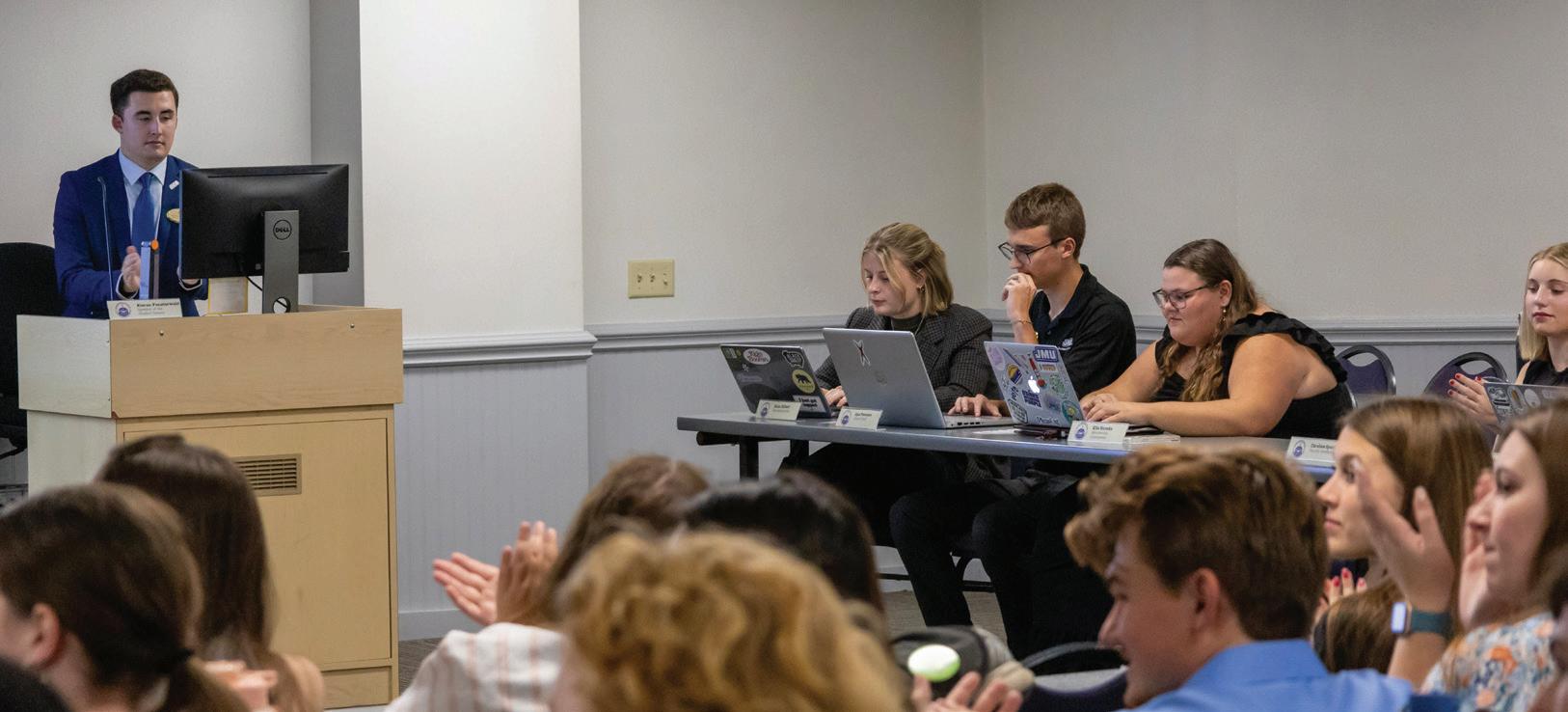

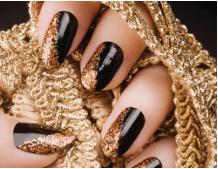
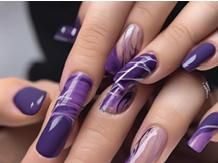

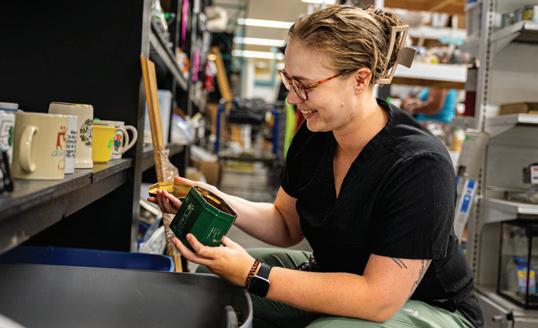

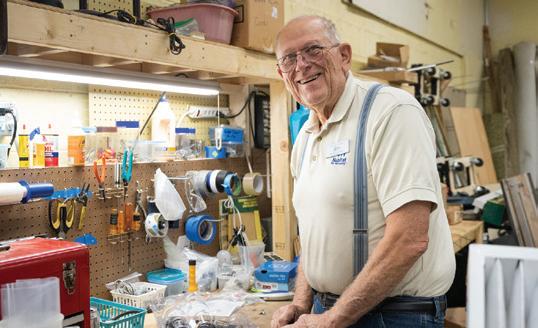
from SEX EDUCATION, page 5
Both speakers emphasized the importance of communicating and caring about the unique needs of a person’s partner during sex.
“Caring about your partner’s pleasure goes a long way,” Miller said.
The speakers also said it’s important to be inclusive of different gender identities and sexual orientations, as well as to emphasize sex education for adolescents.
“In fact, young people who have access to comprehensive sex education are much more likely to delay their first onset of sex,” Fram said.
Fram and Miller offered several resources to attendees, such as their informational website called All About Orgasms, which educates readers on the female anatomy, pleasure, contraceptives and more intimacy-related information.
Both Fram and Miller said it’s important to learn about healthy sex and recommended college students visit JMU’s Counseling Center if they have trauma related to sexual experiences. They said JMU’s University Health Center is a helpful resource for Dukes who want to learn ways to improve their physical health.
Fram said the event was an overall hit with the audience and referred to the crowd as “fascinating and fun.”
If invited back, Fram said she only hopes for one thing to be different: “Invite the boys.”
Both speakers emphasized the need for thinking about all genders when discussing sex and sexuality due to the underlying idea that to be comfortable with being intimate, one must feel comfortable with themself and their identity.
The evening came to a close with trivia and audience stories of first sexual experiences, but Fram and Miller couldn’t let the audience leave without reminding students to continue to learn with confidence and wished everyone a “very magical journey.”
CONTACT Isabella Dunn at dunnie@dukes.jmu.edu and Ella Teeler at teelerel@dukes.jmu.edu For more coverage of JMU and Harrisonburg news, follow the news desk on X @TheBreezeJMU and on Instagram @BreezeJMU.
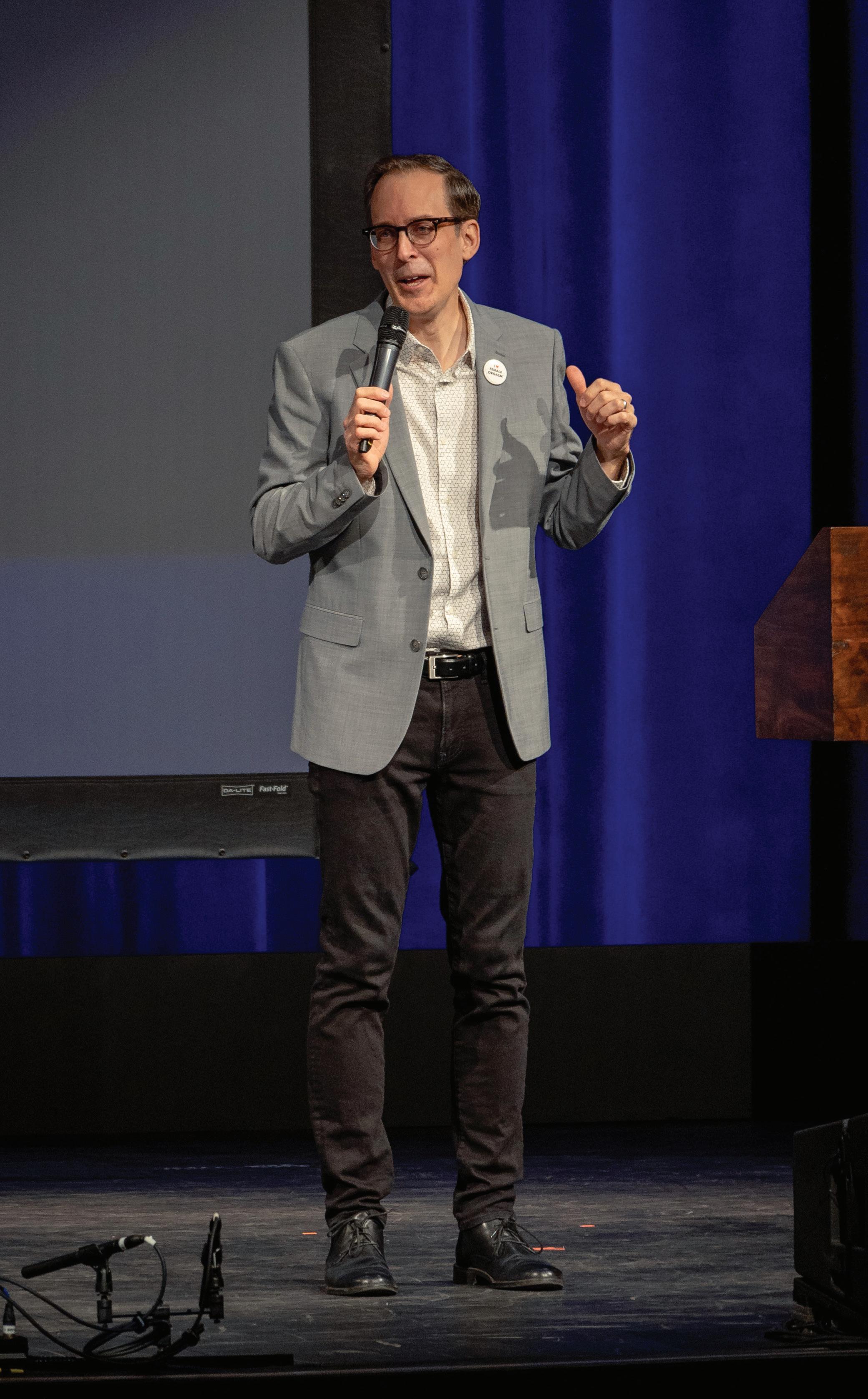

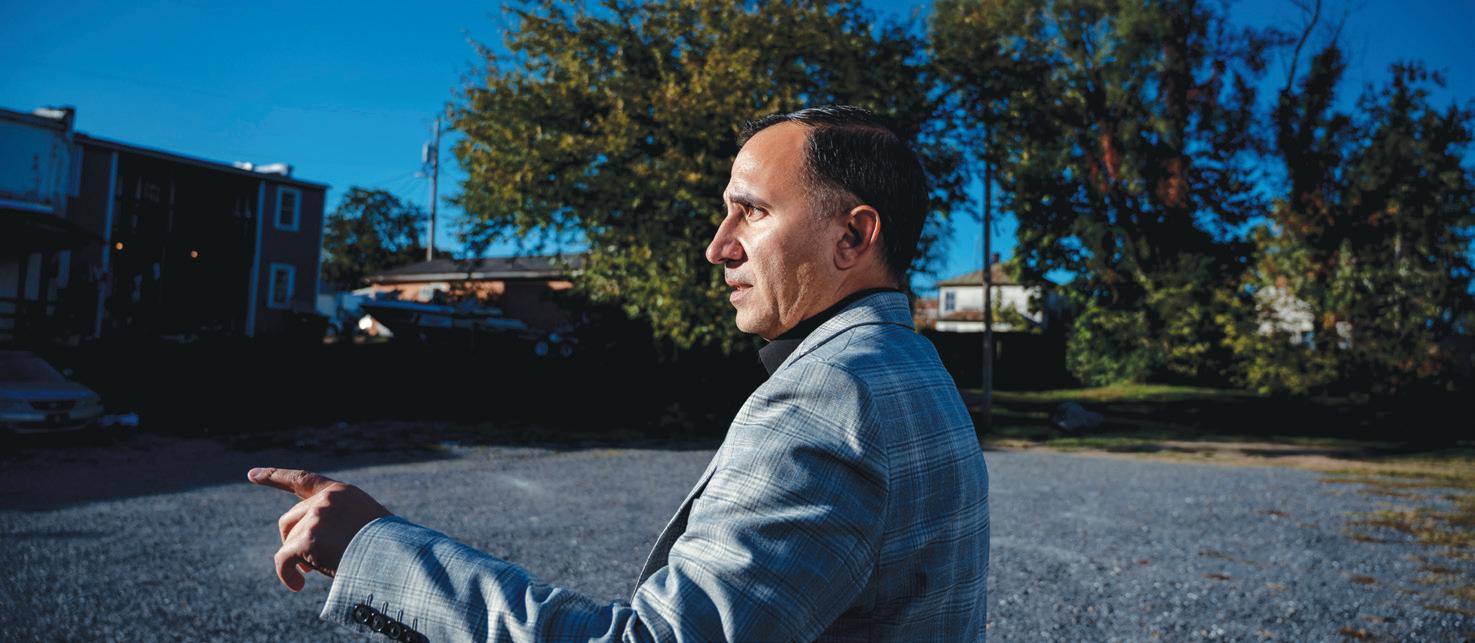
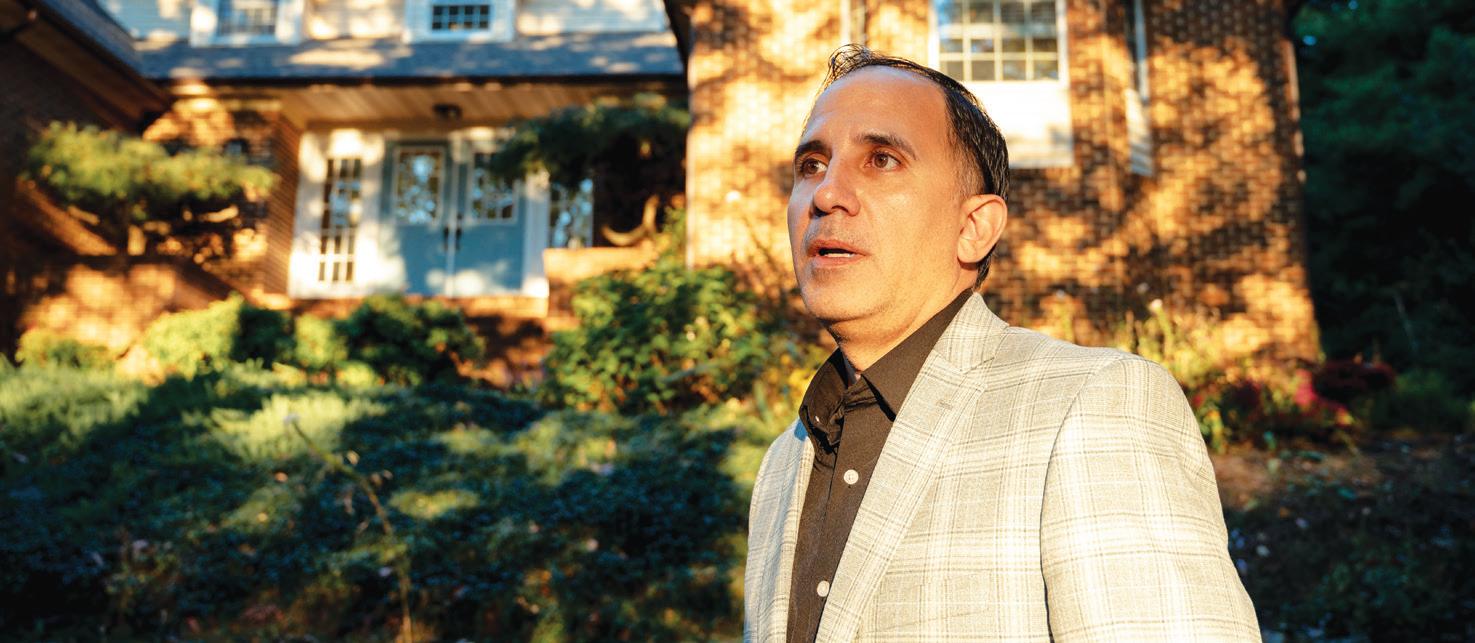
from CALLEJA , page 5
Calleja before he became a Duke Calleja immigrated to the U.S. from Uruguay, following his father’s death when he was 14 years old. After his father’s passing, Calleja said he “became the man of the house” and needed to seek employment immediatel y.
Shortly after, however, Calleja said he suffered from a stroke, adding that all he could think of in his recovery was how “brave” his mother was in the midst of both his stroke and his father’s death.
“The economy wasn’t good, there were no jobs, and we were in despair,” he said. “When [my] dad died, we were thrown into poverty right away, because he was the provider in our home.”

At the time, Calleja said it was difficult for adults to get hired, which caused him to seek work immediately after recovering from his stroke — he was still a teenager. At the time, Calleja worked at a bakery while attending high school.
Calleja said he knew he wanted to one day give a family “a home, proper nutrition, and the opportunities [that he] grew up without.”
After looking into moving to the U.S., he said he knew it was “the logical choice.”
When talking to younger people, Calleja said it’s important to “listen” and “set your goals as high as you can, because if you can dream about it, if you can imagine it, you can achieve it.”
“My family, that is what’s important to me,” Calleja said. “It’s not about education, how many degrees I have, property, or even money in a bank account. Because when you leave, that all stays behind.”
Calleja arrived in Washington, D.C. on Sept. 7, 2000. A few days later, he came to Harrisonburg, where he’s stayed ever since.
When Calleja first arrived in Harrisonburg, he was homeless.
“People gave me an opportunity, they gave me a job,” Calleja said. “They did not give me money ... what they did for me was [say], ‘here is a job,’ ‘here is a room that you can rent.’”
Calleja said if people create resources for communities in need, they will in turn create resources for others in the future.
“By having businesses open their doors here, and give jobs, keep jobs and grow,” Calleja said. “If you do that, then the homeless population will be limited to those who have underlying mental health conditions, that we can then help in a different way.”
Calleja said that, in having businesses open pathways for the homeless population, the population would be limited to those with “underlying mental health conditions,” which can be addressed in its own right.

“We have to take actions to provide them with resources that they can use and create a life for themselves,” Calleja said. “My American dream ... shifted to be my family, my kids, my wife. Part of my private life ... my teaching job, has shifted to being my students. That is my American dream.”
CONTACT Drake Miller at mille8dl@dukes.jmu.edu. For more coverage of JMU and Harrisonburg news, follow the news desk on X @TheBreezeJMU and on Instagram @BreezeJMU.


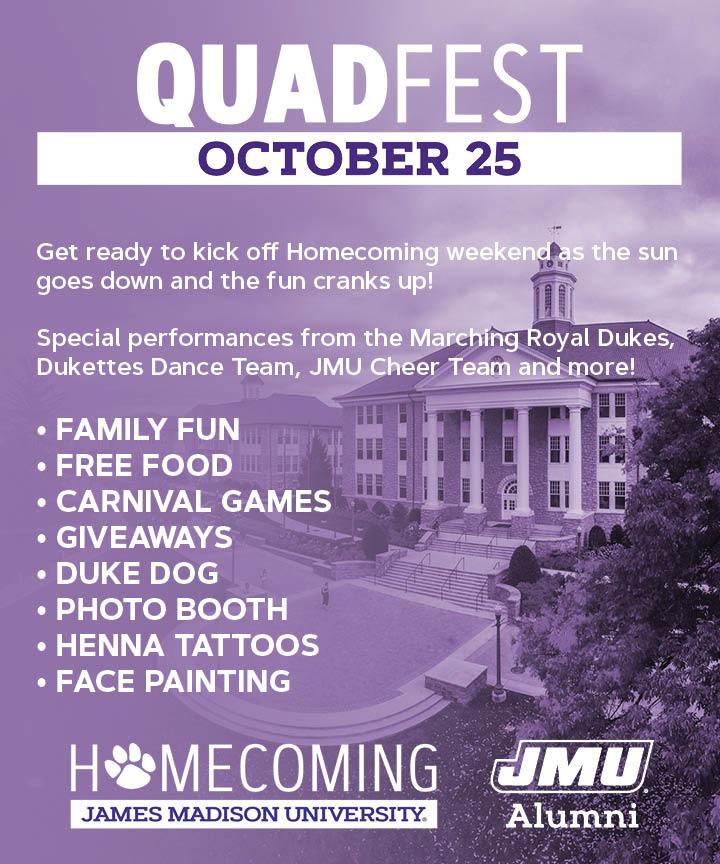
Abby Camp & Sixuan Wu

By ISABEL LEWIS contributing writer
Quidditch. The name of the most popular wizarding sport in the “Harry Potter” world surely rings a bell to many, but what does it look like in the muggle world?
Adapted for non-magical athletes, the quadball sport still reflects many qualities shown in the fictional quidditch games. Players continue to use “quaffles” and “bludgers” in this version of the sport, which features combined characteristics of other non-magic sports like rugby, tag and dodgeball.
While JMU players of this magical game cannot wield flying broomsticks, many of the game’s features remain the same: each team is allowed around seven players on the field at a time, and points are scored by throwing a “quaffle” ball through a hoop on the other end of the field. Team positions include beaters, who throw “bludger” balls at other players to distract them; chasers, who throw quaffles into the opposing team’s hoops; keepers, who defend their hoops; and seekers, who are tasked with catching the “snitch” — a ball or tag that’s attached to the snitch runner’s shorts.
Despite originating in the “Harry Potter” books and movies, JMU’s quadball team is straying from the name “quidditch” due to its association with the controversial author of the books, J.K. Rowling. She’s been under fire for comments made condemning the transgender community, and the quadball team wants to make it known that they don’t stand with those beliefs. Rowling has been labeled as a Transexclusionary radical feminist (TERF) due to this. JMU is one of several other teams nationwide to adopt this change — primarily those registered to the official national quadball organization.
“We’re trying to get away from J.K. Rowling and her being a TERF,” Quadball Club President
and senior theatre major Leslie Evanko said.
“We are actually a gender-inclusive sport. You can go into the official quadball system and say that you are non-binary, which is really nice.”
Quadball is more gender inclusive compared to most other club sports at JMU. Teams aren’t restricted to solely men or women but are open for everyone to join and play alongside each other.
“The [name] change is because of J.K. Rowling’s political statements, which, for a sport that is incredibly trans and gender-nonconforming inclusive, is not good,” said Shannon Dinniman, a senior history major who’s been playing on the team since her freshman year.
Changing the name from quidditch to quadball allows the team to separate from views it doesn’t align with, and it enables more flexibility in gameplay rules.
“By calling it quidditch and keeping it as quidditch, we were kind of limiting ourselves in certain ways, because we weren’t allowed to change certain rules,” Dinniman said. “But by calling it quadball, we’re allowed to evolve the game a little more.”
The sport has been modified in many ways, making itself almost unrecognizable from the sport depicted in the beloved “Harry Potter” series. Some of these differences include the flying and broomsticks. In quadball, members instead use a PVC pipe held between their legs, mimicking a broomstick.
“When it came out in the height of ‘Harry Potter’’s popularity, there were more rules,” team treasurer and junior history major Levan Tsiskarishvili said. “People wore capes, and the snitch could get into a car and drive away. That was the original rule. The game would only end when the snitches were caught, but as it’s gotten a little bit more popular, some rules changed.”
U.S. Quadball — a non-profit governing body of the quadball sport — updates the rulebook annually, refining each rule more meticulously than the last. The quadball game itself isn’t
known for its ease to learn, but is rather characterized by the intricacies involved. More recent rule changes include defining how and when players can kick the ball, and it defines penalization for false start ups on brooms.
Other than the eventual name transition, JMU’s Qqadball team has experienced another big transformation — its split from Virginia Tech. The quadball team used to be a joint team due to the small number of members and went by the name Virginia Reunited. The team was previously merged with West Virginia University, then switched and combined with Virginia Tech. This year is the first time since 2010 that quadball at JMU has had enough interest to have its own team.
“It’s really great to fly under our own name and colors and not have to wear Virginia Tech-color jerseys every once in a while,” Tsiskarishvili said.
Having a joint team made practices difficult and sparse, which limited team bonding time, Evanko said. The team previously had to travel two or more hours to be able to practice with their teammates. In many cases, the players would be meeting each other for the first time on the field during game day.
“Now we have more consistent practices,” Evanko said. “We can have more consistent events with our members. It’s really helpful that we’re all here now.”
This year, the quadball team looks fondly on its newfound independence.
“I think [a benefit] of us getting our own full team is that we’ll be able to focus more on team cohesion,” Dinniman said, “and hopefully be able to get better team chemistry happening for a fairly confident season,” Dinniman said.
Quadball is a recognized JMU club sports team and is supported by the University Recreation Center (UREC). However, the club has to pay a fee to U.S. Quadball to be considered a team. The team welcomes anyone who wants to play and doesn’t hold tryouts. Quadball hosts
three practices a week on Tuesday, Friday and Sunday on the UREC turf field lawn beside Jennings Hall — each two hours long — but the team is flexible with member attendance. The team will host a home tournament on Nov. 2 on the UREC turf, and admission to watch the match is free.
“Part of the fun of quadball is that we’re not as serious as other teams, so we just kind of go out there and we have fun,” Tsiskarishvili said.
The team is in a division called App-5, which means that it plays against schools including Virginia Tech, the U.Va., Penn State and the University of Pittsburgh. Membership has grown dramatically since COVID.
“There were only five of us on the team — that’s not even a whole team to put on a field, and now we’re able to be a separate team from Virginia Tech, host and field tournaments entirely on our own,” Evanko said. “And that’s something that’s amazing to me because [it’s] not that I never thought that it would happen, but I didn’t really think it would happen this year, and I’m really, really proud of our recruitment and our ability to keep members.”
Another unique aspect of the quadball team is that it’s active all year — Dukes can get involved in the club sport almost any time during the school year. The team also has a strong connection with JMU’s Quiz Bowl team, seeing as both teams share most members.
“It’s a great place to find people who are really cool, really genuine and will love and embrace you for whoever you are,” Dinniman said. “I think that’s just a really, really amazing thing.”
CONTACT Isabel Lewis at lewisik@dukes.jmu.edu. For more on the culture, arts and lifestyle of the JMU and Harrisonburg communities, follow the culture desk on X @TheBreezeJMU and Instagram @BreezeJMU.
By AVAJOSEPHINE D’ANGELO & NIMRAT KAUR contributing writers
Fashion tells us a lot about who we are, and Dukes use fashion to express themselves. While new trends are hitting the runways, old outfits and trends from the ’90s and 2000s are still popular in modern fashion.
In today’s world, fashion spreads rapidly through social media. TikTok “get ready with me” or “OOTD” (outfit of the day) videos help viewers find style inspiration. Pinterest is another outlet that people browse and experiment with styles through. In addition, when attending a concert, people enjoy dressing in a style that matches the concert’s vibe to elevate the full experience. Sometimes through Instagram, people find their friends wearing appealing apparel and buy something similar to what they’ve seen.
“All of my friends are the same age but wear completely different things,” senior arts and independent scholars major Marie Rodriguez said. “I think many people find inspiration online for our age if it’s not people in person. It’s also a community thing, too, when many friends have similar clothing preferences, many like to share clothes and swap pieces, especially for fall game days here.”
Whether it’s through newspapers, books, radio or TV shows, what we consume online influences fashion trends. Over the years, the media’s impact on what people wear has changed. From the ’90s, 2000s and now 2020s, some trends have found their way back alongside newer pieces — specifically, baggy jeans, fun animal prints and statement jewelry.
As the weather grows chillier, here are some styles trending on campus this fall.
The preppy schoolgirl look that was popular in the ’80s is inspired by the autumn icon Rory Gilmore from the “Gilmore Girls” TV show. Bows, especially pink ones, have been a trend throughout the 2000s. Before this year, they were worn in the hair, but now they’re seen on water bottles, shirts, stickers and more.
“I would say that’s a little of the cottage core, Y2K style coming back because bows are childlike, playful, fun and not as serious,” Bella Rodriguez said. “You wouldn’t picture grown adults wearing bows, but as college students, we may not wear them in our hair, but it’s fun to have on a water bottle, for example.”
Trend cycles come and go. Some stay for a while because of their timelessness, while others resurface decades later because of their simplicity and wearability. ’90s- and 2000s-era fashion has come back and is thriving.
Besides Rory Gilmore, many fall outfits take inspiration from iconic characters from ’90s sitcoms, such as Fran Fine from “The Nanny” and Rachel Green from “Friends.” Their classic outfits consist of tights, black mini skirts and a fitted sweater paired with heeled boots. This is a simple outfit for the fall weather, and the pieces for these looks can be easily found online or in thrift stores.
“When you look at Rachel from ‘Friends,’ you’re like, ‘Okay, I wore that yesterday, the stuff she wore,’” Bella Rodriguez said. “I think a lot of it is very simple.”
Many ’90s and 2000s artists, such as Michael Jackson, Metallica and Christina Aguilera are also returning to the streaming charts. Certain eras of music have their own aesthetics that their listeners might gravitate toward. For rock bands such as Guns N’ Roses or Nirvana, a more grunge and edgy aesthetic is associated with them. Baggy jeans, a worn-out band T-shirt and a choker are staples for a grungier look. When Britney Spears illuminated the 2000s and dominated the charts, her aesthetic was associated with bright colors and tight-fitting clothes. Low-rise jeans and crop tops were prominent during this era. Many Gen-Z students have parents or siblings who grew up and lived through these eras. Your dad could have his favorite rock band tees tucked away in your attic, or you could find someone’s stash of tees at local thrift stores. This adds to the nostalgia factor of these aesthetics and helps make them easy to find as well.
“I’ve seen on social media and TikTok, a lot of 2000s and ’90s artists like Aaliyah and Michael Jackson are being brought back,” junior mathematics and education major Samaiya Dixon said. “We know people from that generation, our guardians and parents, and maybe siblings who have grown up in that time. Seeing past generations’ items probably brings excitement and something new and different from what we wear.”
Pants and bottoms
Say “bye” to skinny jeans and “hello” to the old-turned-new baggy style. Many different cuts of pants have trended throughout
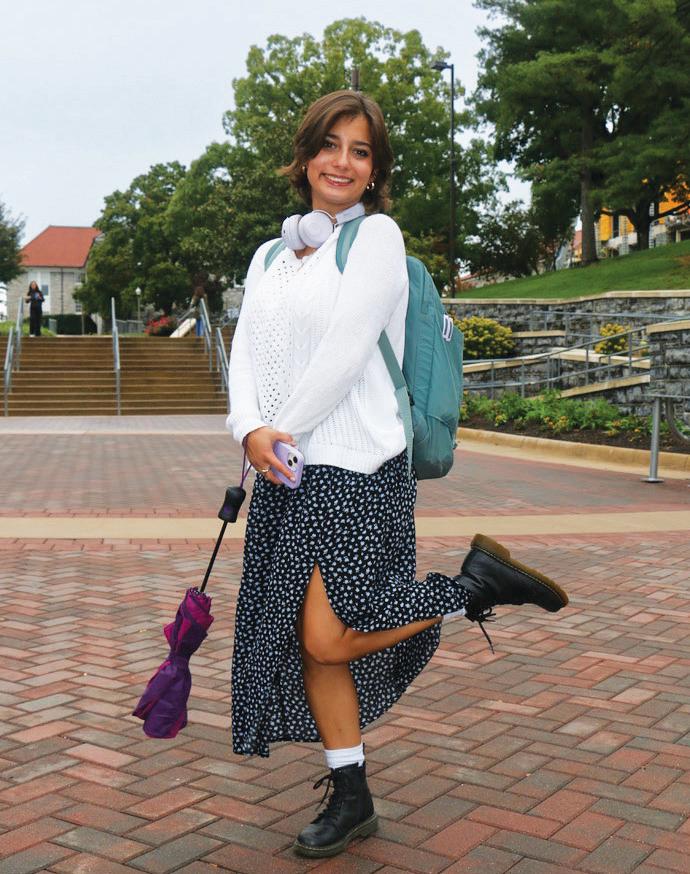
2024, such as cargo pants, low-rise jeans, baggy jeans and widelegged jeans.
“I like to wear low-rise jeans. I like how they look because they fit my style,” freshman Geology major Penelope Masley said. “I love wearing cargo and parachute pants as well. They go well with many of my sweaters.”
Cargo pants are baggy, unlike skinny jeans and leggings, which were more popular in the early 2010s. Pairing cargo pants with a chunky sweater is a comfortable staple for class and can be worn with a cute pair of sneakers. Matching the sneakers with the shirt can create the “sandwich effect” popular among fashion influencers on TikTok. Making shoes and tops become the “buns,” keeping all the other “ingredients” — like accessories and bottoms — together for a more cohesive look.
“I think that cargo pants came into style because of how many pockets they have,” Masley said. “Many women’s pants do not have pockets. This accentuates the style of the pockets when they are bulky.”
Baggy jeans aren’t a new trend; they’re resurfacing from the ’90s and 2000s. A popular style of baggy jeans from the ’90s was JNCO jeans, which the brand itself deemed the original baggy and wideleg jeans. Back then, mostly men rocked the look, but it’s become more inclusive — not tied to just one gender.
“I like the more masculine ’90s look. I love the baggy look,” junior media arts and design major Bella Rodriguez said. “I think ’90s and 2000s [fashion] is just more comfortable for more people.”
Many new jewelry styles have an earthy vibe, which adds to the aesthetics of fall. Popular necklaces include gemstones with unique meanings for each stone. Layering necklaces has also been a trend, and gold jewelry has become more desired than silver jewelry because it matches the warm tones of fall colors such as orange, brown and burgundy.
Chunky necklaces and earrings are also popular accessories to add to outfits. Statement necklaces and layering jewelry are another popular trend in fashion from the ’90s to the 2000s. Chokers and chunky earrings were popular for women in the ’90s and have made a comeback for people with more grunge styles. The 2000s were full of chunky necklaces, colorful jewelry and lots of layering. While fall outfits are usually more warm and muted, colorful and chunky jewelry adds a pop and makes outfits more fun.
“I love the coloring in the ’90s. I feel like they were very primary colors,” BellRodriguez said. “I feel like we kind of got into this weird, modern clean girl era, where I’m like, ‘where’s the color?’”
Throughout the seasons and decades, nail art trends alter. The most popular on-campus color this fall is burgundy/Bordeaux red. Adding a pop of red nail polish, which TikTok has advertised as “cherry glazed nails,” and pearlescent nails (also known as
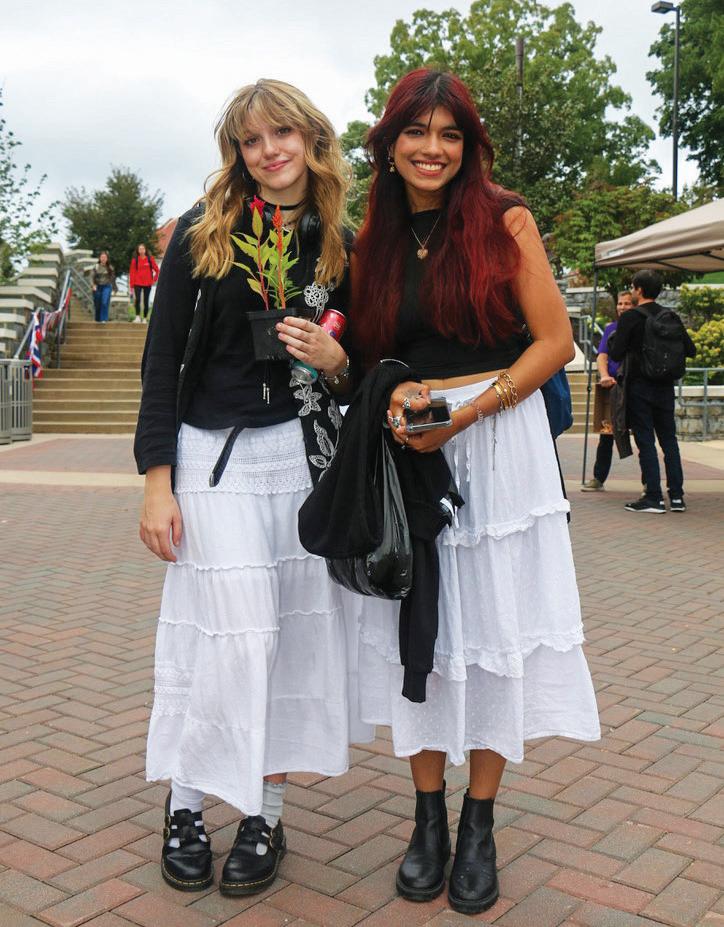
glazed doughnut nails), have become widespread among college students for getting the ultimate fall look. Throwing on some simple but elegant rings can complement the nail art. Now, when typing that midterm essay, your nails will look on-point.
If you don’t have much room in your closet, pair a summer dress with a knit sweater, which can create the illusion of wearing a skirt. Many Pinterest posts have shown this worn with knit socks and boots. This is perfect for walking around campus, and if you get sweaty up the steep hills and steps, you can simply take off the sweater and create an entirely new look.
Animal prints were also in style over the summer and stayed so during the fall season. Decades ago, animal prints were usually worn when going out to parties or clubs. Nowadays, however, these prints have become more casual than fancy. Cow print was big in 2020, but leopard, cheetah and zebra prints are in trend now.
“I love it,” Dixon said. “I have cheetah pants of my own, and I can’t wait to style them, because I love different things.”
Animal prints are also timeless, as they can be worn as either accessories or an outfit’s focal point. They can be incorporated in many different ways — from skirts and tops to belts and necklaces, these animal prints have made their way onto everyday outfits in a chic way.
“I think leopard print is gonna stick because it’s more timeless than cow print,” Bella Rodriguez said. “I don’t know why we always reach towards animal print. I think it’s just very unique and cool.”
On a chilly day when you’re feeling lazy and all you’d like to do is binge that Netflix show you’ve been craving, a sweater and sweatpants could be the perfect outfit. Matching sweat sets have become more popular among Dukes and other adults; they don’t require much effort to put together and still look cute. They’re usually worn with UGGs or Birkenstocks to maximize the outfit’s comfort level.
Sweat sets and tracksuits were also very popular in the 2000s, with Juicy Couture tracksuits being the “it girl” outfit of that era. During that time, sweatshirts were typically cropped, and sweatpants were low-rise and rested on the hips. While Juicy Couture tracksuits are also making a comeback, tracksuits now are much more baggy and lean into comfort rather than aesthetics.
CONTACT Avajosephine D’Angelo at dange2ax@dukes.jmu.edu and Nimrat Kaur at balgk@dukes. jmu.edu. For more on the culture, arts and lifestyle of the JMU and Harrisonburg communities, follow the culture desk on X @TheBreezeJMU and Instagram @BreezeJMU.

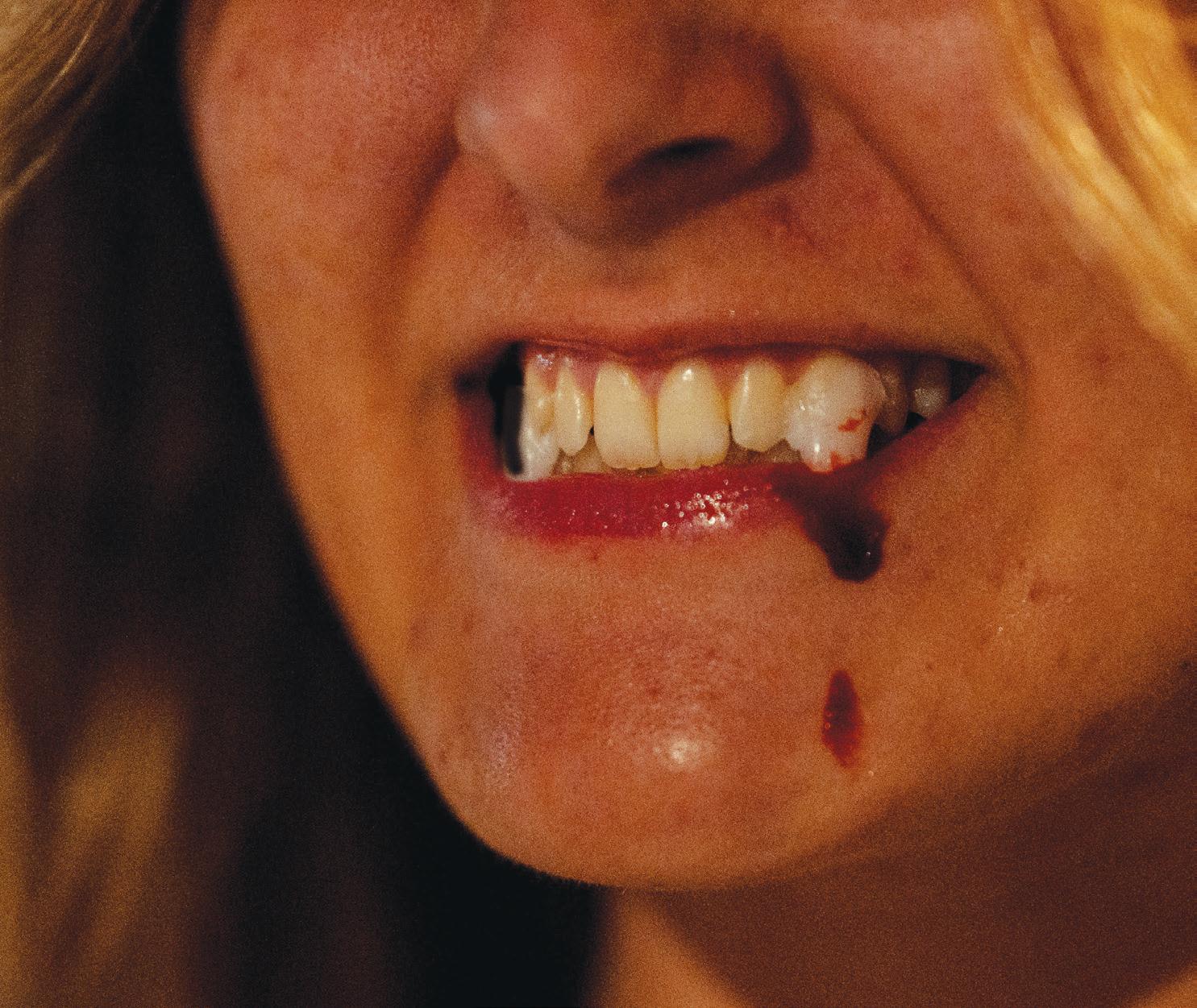
By SIXUAN WU
The Breeze
Editor’s note: the following books contain adult themes.
We know the chill that runs down our spines when we see the signs: the flash of a fang, the glint of red eyes, the shadow of a cloaked figure disappearing into the night, leaving behind only a splatter of crimson …
No Halloween is complete without some sharp-toothed, pale-faced monsters lurking in the corners. This spooky season, sink your teeth into these four niche vampire novels that will haunt you with a lingering sting. Be warned, however — for these aren’t your glittering Edward Cullen-sort of vampires. Be sure to read these books with the light on if you’re not brave enough to venture into the shadows.
“Carmilla” by Sheridan Le Fanu
Let’s start at the very beginning — with the lady vampire who predates Bram Stoker’s “Dracula” by 25 years.
Originally published as a series in a literary magazine called “The Dark Blue” from 187172, “Carmilla” is a gothic novella narrated by a young woman named Laura who falls prey to her mysterious house guest, Carmilla — later revealed to be a vampire.
A real gothic classic, “Carmilla” captivates readers not through gruesome scenes of blood and gore, but its eerie atmosphere. From the old castle to the lonely maiden trapped within and the mysterious deaths in nearby villages, this novella checks every box for a hauntingly dark Victorian tale.
Aside from the dark and the mysterious, the most groundbreaking aspect of “Carmilla” is creating the prototype of the lesbian-vampire genre. There is a humanness to Carmilla that captivates those around her. Throughout the novella, the protagonist, Laura, often notes Carmilla’s rosy cheeks and warm touches, also Carmilla’s bold affection that borders on romantic love. Both fascinated and abhorred
by her attraction to Carmilla, Laura’s fear is further fueled by the monstrous black cat that haunts her dreams, the twin punctures she finds in her bosom when she wakes and her health that wanes mysteriously day by day.
Aided with the era’s signature flowery language, “Carmilla” masterfully makes the familiar strange and the strange familiar. As the push and pull between Laura and Carmilla spirals, readers will find themselves sinking deeper along with the protagonist into the mystery surrounding Carmilla’s true identity and the lingering impact her haunting presence brings.
“Dracul” by Dacre Stoker and J.D. Barker
Inspired by notes and texts left behind by the author of “Dracula,” this prequel to Bram Stoker’s timeless classic reveals not only the origins to Dracula but also Bram Stoker — and the mysterious woman connecting them.
Written by Bram Stoker’s descendant Dacre Stoker alongside J.D. Barker, “Dracul” chronicles the fictionalized life of Bram, beginning in his bedridden childhood under the care of his nanny, Ellen Crone. As Bram and his sister Matilda begin noticing a pattern of bizarre behaviors from Ellen, they investigate further into the mystery, only to have their endeavors come to an ominous end as Ellen suddenly disappears. Years later, when Matilda returns from her studies in Paris to tell Bram she had seen Ellen again, they realize the nightmare they long thought ended had only just begun.
A feast for those who know monsters are real, “Dracul” is eerie, subtle and deliciously haunting, with distinct takes on a bloody tale that avoids falling into the trap of the vampire genre clichés. From pale hands that stretch out of bogs to nights at the morgue, so many scenes in this novel will surely leave you on the edge of your seat.
Each part of “Dracul” welcomes the readers with something new — whether that’s the mystery of the chase, the epic action toward the end or just absolute, bone-chilling horror
that permeates throughout the book. Yet, at the same time, “Dracul” also pays tribute to Bram Stoker’s original novel by telling the story in a similar format — through characters’ letters and journals. The fragmented narrative, paired with the constant flashing between the past and the present, adds so much suspense to the story. Of course, like all good horrors do, “Dracul” ends with a cliffhanger that leaves the reader wondering if the end is just the beginning.
“A Dowry of Blood” by S.T.
Gibson
You know a story is sure to ensnare readers when it begins like this: “It was never my intention to murder you. Not in the beginning, anyway.”
Narrated by Dracula’s first bride, Constanta, “A Dowry of Blood” is the “last love letter” to her once-beloved lord and husband — or rather, a confession of why she chose to murder him after finally seeing the monster behind the man.
Lovers of poetic language in fiction will surely fall head-over-heels for this book. Gibson’s artful prose flows through the story like water, a fitting narrative for Constanta’s everlasting life. In fact, the writing is so beautiful that it creates an intriguing juxtaposition with some of the more gory imagery — almost as though the narrator, Constanta, is attempting to tune down the gruesomeness of her bloody hunts. This allows readers a glimpse into the inner fragility that lies deep beneath both the eternally beautiful façade and the monstrous nature of each character.
Hauntingly beautiful and darkly sensual, this novel depicts the weight of an all-consuming love in a gothic frame and how that weight lingers on, even as one untangles themself from its torment. “A Dowry of Blood” is the little-known retelling of a classic horror that one might not expect but is impossible to put down once started.
“The Hunger” by Whitley Strieber
Despite eternal youth’s many allures, “The Hunger” is all about the prices one must pay
for everlasting life. This paranormal cult classic follows the millennia-long existence of vampire and classic-pianist-in-disguise Miriam Blaylock — and how that existence is marred by deaths and sorrow, for all her partners wither and die eventually, despite Miriam’s attempts to make them immortal like her.
“The Hunger” is a unique addition to the vampire genre — in fact, the word “vampire” is never once mentioned throughout the book. Instead, this novel approaches everlasting life and the blood-drinking that accompanies it from a near-scientific angle, focusing on discovering the secret to immortality through scientific experiments, such as studying how Miriam’s sleep patterns are related to her body regularly regenerating itself.
This novel also explores eternal life’s weight, portrayed through flashbacks of Miriam’s life and how she constantly attempts — and fails — to make multiple lovers immortal throughout centuries, only to lose them all to old age as the years catch up to their youthful bodies within weeks. Through Miriam’s eyes, we see the dark side of immortality and how the fear of losing another loved one could quickly morph into an intoxicating obsession.
For those looking to bite into a one-of-a-kind vampire horror, “The Hunger” will deliver that chilling aftertaste. With the marrying between the cold precision of science and a compulsive longing for companionship, you’re sure to walk out of this story with the hair standing up on the back of your neck
CONTACT Sixuan Wu at thebreezeculture@ gmail.com. For more bookish content, stay tuned for the “Bibliomania” column and follow the culture desk on X @TheBreezeJMU and Instagram @BreezeJMU.

EDITORS Hayden Hundley & Preston Comer
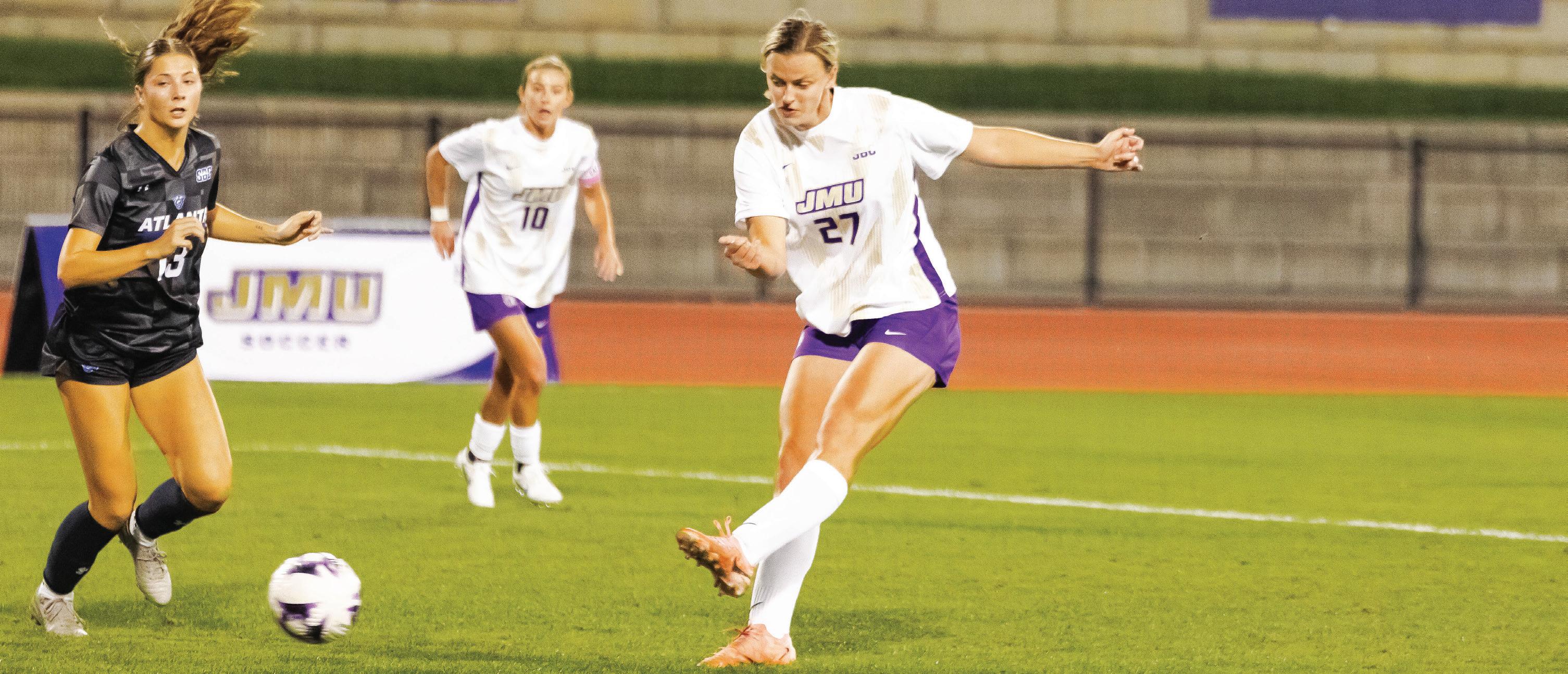
By ZACH MENDENHALL
The Breeze
A five-hour time difference separates the U.S. from the United Kingdom, causing many to stay up late to watch worldwide sporting events. This may include phenomena like the Super Bowl, the World Series or, for some, JMU women’s soccer.
Staying up until hours like 2 a.m. isn’t a problem for James and Karen Lackey, the parents of JMU freshman forward Ginny Lackey, a native of Manchester, England, where her parents still reside. The reason? To watch their daughter play and send her messages of encouragement in the process.
Lackey grew up as a lifelong fan of Manchester City Women’s Football Club, one of the top teams in the FA Women’s Super League. She spent her youth in the team’s academy program, showing signs of maturity from a young age.
“Her knowledge was years ahead of any kid that we even expected, to the point where we were like, ‘Ginny should just go and be the coach’,” former Women’s Academy Football Coach at Manchester City and current FIFA Talent Coach Rachel Lever said. “No one was striking a ball like her at 12 years old. She just knew where the goal was, like everything about her movement.”
Lackey has been surrounded by soccer, or “football,” for most of her life and often played with her father in their yard growing up. He’s “Manchester-City-obsessed,” she said, as she never got much of a choice who to support but has taken it with stride.
“The minute I was walking, he had a ball at my feet, and then my younger brother, bless him, I used to stick him in the goal and shoot at him for hours every day,” Lackey said. “My mom, she doesn’t love football, but she has always supported everything that we do, and I can’t thank them enough for all the sacrifices they’ve made for me.”
She debuted for Manchester City’s first team in an 8-0 victory against Nottingham Forest in the FA Cup on Jan. 29, 2022. Although Lackey played the final 15 minutes of the game, she tore her ACL soon after.
Seeing Lackey’s ACL injury was heartbreaking for both Lever and Manchester City Women’s Academy coach
Georgina Donnelly, because she knew Lackey’s potential and her strong love for the game. Despite not being able to use her leg during recovery, Lever said she was blown away by Lackey’s “unreal” mindset during recovery.
“I think it was just mentally hard because she just wanted to play so much … so hopefully that’s all behind her and she doesn’t have another serious setback,” Donnelly said. “The fact that she couldn’t put the ball in the back of the net for a year, that hurt her.”
Donnelly spent 23 years in the United States and served as an assistant and head coach for the women’s soccer team at Army in 2019 and 2020, respectively. She boasts a playing career that includes teams like Liverpool Ladies FC and the England National Team.
After Lackey reached full fitness, she returned to the pitch for a couple of friendlies and trained with the first team. This opportunity came at the wrong time, however, as she was still fresh off her injury, Donnelly said.
“That’s why the opportunity to go to the States opened up, because she’s such a high potential player, such an unbelievable goal scorer,” Donnelly said. “Nothing’s better to prepare a player than playing in the States … so we’re really hoping that she’s going to crush it over there, and then we get first dibs when all the clubs are scrambling to get her.”
At the time of Lackey’s torn ACL, JMU women’s soccer head coach Joshua Walters Sr. received an email sent to multiple schools from a recruiting service in England that included her name. Due to Lackey’s injury, many schools “dropped off the planet,” Walters said, leaving an opening for JMU.
After viewing footage of Lackey, Walters reached out to her and flew to Manchester in December 2022 to meet her family, discuss Lackey’s future and plan a visit for the following spring.
Lackey was “blown away” after visiting JMU’s campus, Walters said, but received a development contract from Man. City and took the chance. Walters kept an eye on Lackey throughout the season, however, and took his opportunity when realizing City didn’t plan to sign her to a full pro contract.
“I just came back, got her and said, ‘I have a spot, what do you think,’ and she was like, ‘give me a day or two,’” Walters
said. “Two days later, she called and said, ‘Hey, I’m coming to JMU,’ and so we got a return on our investment after some time, but, man, has it been fantastic.”
Lackey was on loan to Burnley from January to May 2024, where she scored 12 goals in 25 games. She received offers from Utah, Oregon State and ECU, among others, but decided on JMU after enjoying the style of play she witnessed.
“I just really liked the way [Walters] spoke about football, and then when I came to visit, the group seemed amazing, and the play seemed really cool,” Lackey said. “A lot of the other coaches I spoke to would maybe say one thing, but [he] always said it and then sent a video or sent a clip.”
Despite missing the team’s first five games, Lackey leads the Dukes and Sun Belt in goals with 10 in nine games. She’s also tied for fifth in assists on the team with three.
“I’m really happy I’m scoring, but I’m just happy the team’s winning,” Lackey said. “My job on the pitch is to score the goals, and if that helps a team to win, then that’s brilliant. If I score and we lose, that’s not as good, so as long as we’re winning, then that’s all that matters.”
Lackey was ranked 24th in the Top Drawer Soccer midseason rankings amongst freshmen. Her 10 goals are tied for 18th in the NCAA; however, she’s averaging 1.1 goals per game — ranking her first in the country as of Wednesday. Even so, she’s ineligible for first, as she has yet to play in 75% of the team’s games — having to await NCAA clearance.
“She can cover ground, but is just so intelligent, and how she plays the game, how she moves, how she uses her technique, how she sets her teammates up ... she fits in really well,” Walters said. “She’s a kid where you asked her to do something within 24 hours, it’s done, she’s amazing.”
No other schools had Lackey on their scouting report due to her lack of time on the pitch, giving JMU an advantage.
“We turned it into a secret, kind of ... we just said, ‘All right, this is our secret that we’re gonna surprise on somebody at some point in time,’” Walters said. “The other coaches were like, ‘Hey, who is that kid, she wasn’t on our scouting report,’ and I was like, ‘She just became eligible this week to play’.”
By GAVIN AVELLA contributing writer
JMU junior goalkeeper Sebastian Conlon has been playing soccer, since the ripe age of 5. Despite dabbling in a bit of basketball during his youth, soccer was Conlon’s love, and he cited his dad as his inspiration.
“My dad’s my closest friend,” Conlon said. “He’s my best friend. We have such a strong relationship, and him being from Germany, he loved soccer growing up. Once he came to the States, he became a basketball fan, but soccer never left him.”
Conlon’s father spent time in the Bundesliga II Side St. Pauli FC’s academy in Germany before immigrating to the United States. and spending time in the Pittsburgh area, finally settling in Reston, Va., where Conlon grew up.
Conlon, affectionately called “Sebi” by his coaches and teammates, said his father always hoped he would fall in love with soccer, but he never forced anything upon his son.
“I know some parents, they want their kids to play the sport they grew up playing, but he let it happen naturally,” Conlon said. “We just started in a rec league, and I just fell in love with the game. It’s a beautiful sport and I’m truly blessed to play it.”
After falling in love with the game, Conlon kept playing soccer vigorously, eventually finding his way to MLS D.C. United Academy after being scouted by some of its personnel. Once involved with D.C. United, Conlon’s life and soccer career took a dramatic turn.
“The training was at such a high level, so I give credit to that,” Conlon said. “Being in an MLS academy, you get a lot of recognition. You go play tournaments all over the world. We went to the Cayman Islands, Canada [and] Mexico.”
D.C. United played a pivotal part in Conlon’s development.
“It’s an unbelievable experience to be in that kind of environment at such a young age,” Conlon said. “It shaped me to who I am today. Ultimately, being with Loudoun, which was my first taste of professional soccer I think I was 15 at the time, it’s just a different ball game that really, really helped me become who I am now.”

Coaches at D.C. United saw Conlon’s potential and took a gamble that paid off, and he was converted from a field player to a full-time goalkeeper. After signing with D.C. United’s Academy when he was 11, Conlon made the switch to goalie full-time. Conlon spent seven years at the academy before spending time with USL organization Loudoun United and finally with the D.C. United first team before committing to JMU.
Conlon says his experience training with D.C. United and its first team helped prepare him for his time at JMU.
“Then, I was working with D.C. United’s first team,” Conlon said. “It was just a different step up. I was training with guys like Wayne Rooney, Luciano Acosta, Bill Meade.”
It turns out training with legends such as Rooney and Acosta paid dividends. Stepping on the scene at JMU as a true freshman in 2022, Conlon made his mark, saving 68 shots and allowing 28 goals across 19 games. He played and logged a full 90 minutes in all but one match on the season.
His coming-of-age as a freshman paved the way for multiple individual achievements and acknowledgments. This included All-State Second Team, TopDrawerSoccer National Team of the Week, two-time Sun Belt Defensive Player of the Week and a No. 74 ranking in TopDrawerSoccer’s Freshman Midseason Top 100.
When asked how Conlon was able to perform as a freshman, JMU head coach Paul Zazenski said his time with D.C. United Academy provided support.
“He was in a professional setup and system with D.C. Academy, and he had trained with the likes of some pro players and trained at a high level,” Zazenski said. “So I think that definitely helped him translate into Division I college soccer. Once he got in, he was in a rare position to start as a freshman, which is pretty unique for the college game, to have somebody that steps in from day one and gets that opportunity.”
Conlon took that unique opportunity his freshman season and ran with it.
With high expectations for his sophomore campaign and a second stint as JMU’s starting goalkeeper, Conlon answered the bell. He helped the Dukes earn an at-large bid to the NCAA tournament and a run to the Round of 16 for the first time since 2018.
Conlon attributes his growth with the Dukes to JMU goalkeeper coach Nick Melville, who’s been at JMU since Conlon arrived in 2022. He said JMU fans wouldn’t see the performances he’s had without Melville’s coaching.
“He’s been one of the most instrumental coaches and mentors I’ve had in my life,” Conlon said. “I can’t speak more highly about him. He’s just done so much for me. We sat down at the end of my sophomore year last year, and we just had an honest conversation about where we want to go, me as an individual, and what the coaches need from me and what I need from them.”
In addition to Melville, Conlon spoke highly of fellow goalkeepers senior Drew Slack and redshirt sophomore Jack Doogue. Conlon said the unit has the utmost love and respect for one another, and they continually push each other’s limits and boundaries day in and day out.
“They’re two hell of a keepers to be around,” Conlon said. “They have been unbelievable in my time here at JMU, and I’ll never forget them and what they’ve done for me. So I definitely got to give credit to those two.”
Now in his junior year, Conlon is feeling and playing as confident as ever.
“My freshman year, being the starting goalkeeper, you’re still looking to find yourself as who you are as a person,” he said, “but as well as a player. Once you get into your sophomore year and then ultimately junior and senior year, you have a lot more confidence. That’s what I think is a big thing that we’re seeing this year.”
Zazenski echoed that sentiment, as he said Conlon has been playing the best soccer he’s “ever” played in a JMU uniform.
“So I think the other thing with Sebastian is he’s very well-rounded,” Zazenski said. “He’s not a goalkeeper that has many glaring weaknesses in his game. He’s very good with his feet. He’s a good shot-stopper. He’s added a lot of ability in the air, he reads the game extremely well and has a great soccer IQ. So, he’s really worked hard on the physical

elements this past summer to come in and be ready to go.”
Melville said Conlon has the same ability to play on the ball with his feet that a lot of field players, do and Conlon’s skillset is “instrumental” to the Dukes’ success when playing out of the back.
“When we’re on the ball, we’re able to utilize Sebi in possession and really unbalance,” Melville said. “Then again, going back to more of the intangible qualities, he’s got a very, very good idea as we go into every match [of] what’s needed from him on the ball.”
Conlon has allowed the Dukes to play an expansive yet controlled style of soccer, methodically building out from the back and utilizing his on-ball presence and comfortability with the ball at his feet to catch opponents off guard and counterattack quickly with the opposition on its back foot.
Conlon has helped lead the Dukes to a 7-1-5 record so far this season, continuing his stellar form as he ranks third in the NCAA in save percentage (.851) as of Wednesday afternoon.
Conlon has posted seven clean sheets this year and had a career-high 10 saves in the Dukes’ 2-0 win Saturday over Kentucky.
Conlon, Zazenski and Melville attributed JMU’s success over the past three years to the Dukes’ culture and camaraderie. Conlon said that while it’s a “common cliché” for teams of all sports to refer to themselves as a family, it rings true with the Dukes.
“We’re not actually a family, but here I can say with everything, we live together, we eat together, we train together, we go out together, we grind and we fight,” Conlon said.
Under Zazenski’s familial culture, Conlon has continued his dominant form — cementing himself as one of JMU’s all-time premier goalies. He now sits at 16-career clean sheets, is tied for fifth in clean sheets in a Sun Belt career and is tied for 10th in JMU career shutouts
CONTACT Gavin Avella at avellagt@dukes.jmu.edu. For more men’s soccer coverage, follow the sports desk on X and Instagram @TheBreezeSports.
from LACKEY page 14
With Lackey named back-to-back Sun Belt Offensive Player of the Week and earning the national team in week seven, her ability and skills are no longer a secret. Lackey felt the move to the U.S. would be good for her and give her the chance to “grow up,” Donnelly said. She feels Lackey has been thriving in her opportunity to explore a new culture and teammates.
In the U.S., Lackey can get the “best of both worlds,” Donnelly said, as she’s grateful for the opportunity provided by JMU. England doesn’t offer the same support for players to “bridge the gap” from academy to professional teams, and players may lack an educational degree to fall back on, Donnelly added.
All Lackey had known was Man. City, Lever said; she was brought into the club at 10 years old, where she used to dominate games in the U12 age group. Lackey moved up to U14 when she was 12 because the competition wasn’t enough for her, and she continued to progress through the age groups early.
“The way she used to rise at the back post, I’ve never seen a 12-year-old be able to get up off the floor,” Lever said. “I remember me and the other coach at the time used to just look at each other like, 'This girl is unreal, she can finish for fun'.”
Lackey continues to work on being dominant in the air during headers and corners — and using her height to her advantage — Walters said. Improvements on the defensive end are also still a work in progress, but her coach sees her as a possible “weapon, both defensively and offensively,” he said.
Walters sees a “natural gravity” toward Lackey in the locker room and the potential to be a future leader, but feels she isn’t fully in a comfortable spot to be one just yet.
“I think she’s going to show people by example most of the time, versus influence,” Walters said. “She’s not a super vocal leader right now, I think she will be. I think right now she’s trying to make sure she fits into the team.”
Despite not being the loudest on the field, Lackey is brave enough to point out when something needs to be fixed, Lever said. With Lackey’s knowledge and her teammates’ respect, Donnelly sees becoming a team captain in Lackey’s future.
“When she was coming back from her injury, she’d sit on the bench sometimes and give a rundown of what was happening, and it was so insightful,” Donnelly said. “She wasn’t wasting a minute, she was helping her teammates, even then, when she was sitting and watching them.”
All around, Lackey is “an absolute gem,” Donnelly said, as she’s great to work with and isn’t driven by her ego, having the “ability to score 100 goals in a season and not let that change her.”
Lackey also takes pride in academics and ensures they’re at the highest standard, Lever added.
Donnelly believes many teams will be after Lackey after her time at JMU but knows that “she bleeds blue and purple right now.” She hopes JMU enjoys Lackey while it has her and finds it “cool” to know it will be a part of her journey to possible superstardom — as she hopes Lackey returns to Man. City after her tenure at JMU.
Donnelly and Lever aren’t able to watch JMU’s full games, but they’ve tracked Lackey’s progress through highlights and social media, as Lackey’s father is often among the first to retweet anything produced by his daughter.
For Lackey, she’s content with her decision.
“I’m having fun, so I can say I made the right decision,” she said.
Lackey hopes to keep scoring goals for JMU and be part of successful seasons in the future. She wants to make an impact as a good person and teammate during her time at JMU as she continues to be herself, she said.
Due to Lackey’s maturity from a young age, her parents have always been very positive and have pushed what’s best for her, Lever said. They never had an issue with Lackey progressing early in age groups and supported her decision to come to JMU and earn an education while playing, she said.
“It’s always just been Ginny’s journey, which is really nice,” Donnelly said. “It’s refreshing for us to work with parents like that, and they trusted the coaches all the way through, which was good.”
CONTACT Zach Mendenhall at mendenzl@dukes.jmu. edu. For more women’s soccer coverage, follow the sports desk on X and Instagram @TheBreezeSports.
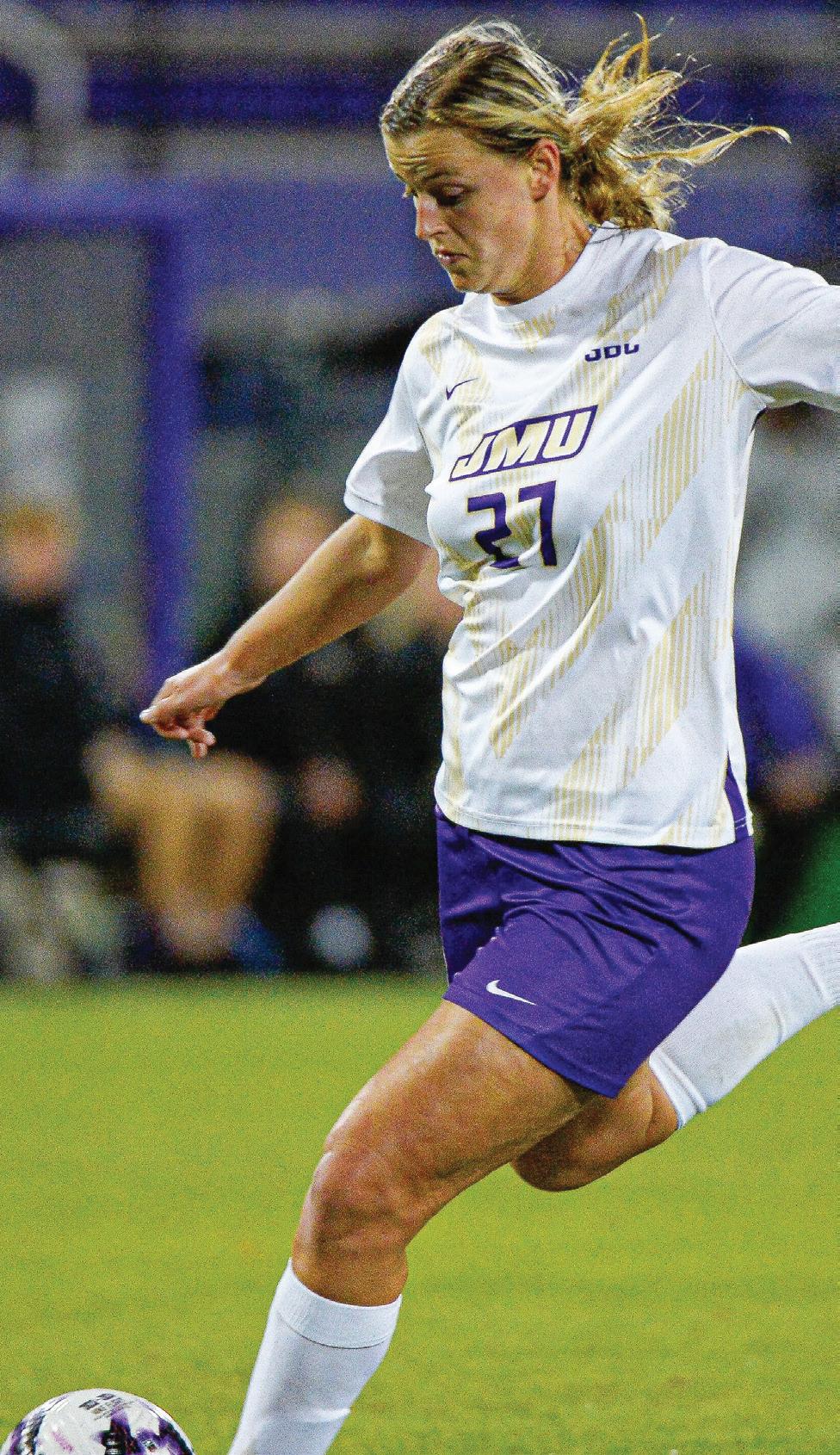

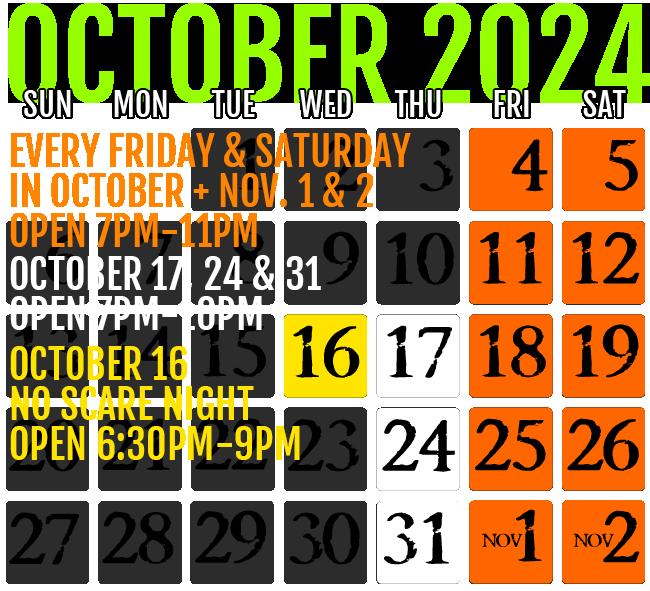
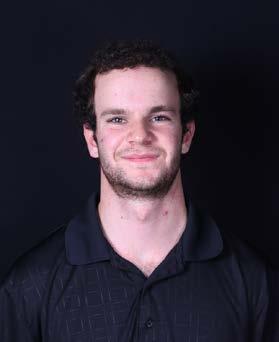
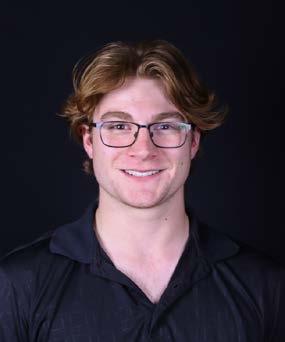
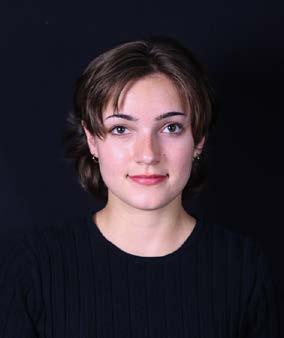






EDITOR EMAIL breezeopinion@gmail.com Maya Skurski

Want to praise someone or get something off your chest? Darts & Pats is the place to do it. Submit your own at breezejmu.org.
A “wrong-color” dart to the last home game for being a white out.
From someone who thinks Dukes should stick to wearing purple.
A “life-saver” pat to the person who returned my JACard to the UREC front desk.
From a student who needed it back to buy groceries.
A “show-must-go-on” pat to the a cappella group that sang the national anthem at Thursday's game, and to the crowd that helped during technical issues.
From someone who enjoyed the community and vocals.
A “karma-will-get-you” dart to the girl who backed into my car at 7Brew and drove away.
From an employee who memorized your license plate.
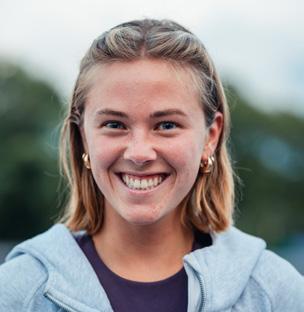
KATIE RUNKLE Breeze columnist
We’re all aware of the typical conversations surrounding fraternities and sororities. The stereotypes, judgments, criticisms and issues abound, leaving the benevolence in these groups unnoticed.
Junior Sydney Herman, Tri Delta director of sisterhood, actually gives these flaws a seat at the table in order to learn and grow from them.
“Our chapter, everyone has faults, and I feel like a strength of ours is accepting the faults instead of ignoring them, and kind of using them to build and strengthen our sisterhood as a whole and our relationships together,” Herman said. “It’s easy to just ignore the bad and focus on the good, but it’'s way more important to focus on the bad and grow from it.”
In the last year, six fraternities and four sororities have been investigated and experienced some level of probation at JMU. It’s certainly timely advice to focus on the bad, but what must not be lost is that this is a time for these organizations to grow and blossom in new ways from the mistakes they’ve made.
We all do it in our own lives, so why not allow the same from Greek organizations?
Junior Will Dempsey is Kappa Alpha Order’s risk management chair, a position that requires him to focus on what’s going wrong, what the problems are and the “bad” at events within the brotherhood. This task has actually equipped him with responsibility and patience in a way he couldn’t have gained from other opportunities.
“The way I carry myself now is completely changed because I know that I’m supposed to be looking out for everybody, and I’m really grateful for it. I really do love it,” Dempsey said. “It’s turned me into a better person.”
Like Dempsey, senior Angie Hantzopoulos, Phi Mu’s former director of harm and risk prevention and current public relations committee member, attributes her ability to run for and carry out the position of Phi Gamma Nu’s (professional development organization of the College of Business) vice president of communications to her involvement and opportunities with her sorority, Phi Mu.
While wearing a sweatshirt with the words “With Love, Phi Mu” fittingly pasted to the front, Hantzopoulos said the rush process is something to believe in.
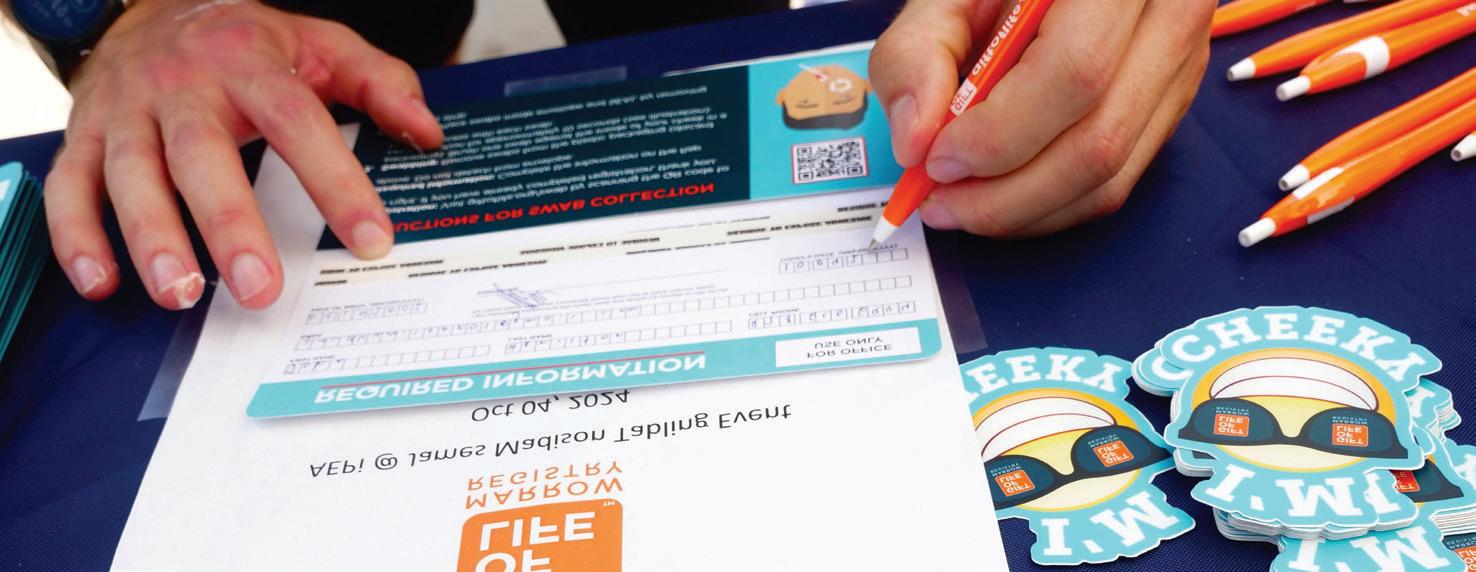
“The process of formal recruitment makes it so that you join a house which has the same values as you,” Hantzopoulos said. “Wanting to call it your home, and having 12 chapters on campus at JMU is so many, you’re going to find someplace that fits you. And once you’re in those chapters, you’re going to find the people that align with what you want to get out of it.”
Junior Mike McGraw, Delta Sigma Phi’s secretary and composite chair, said during the recruitment process the organization’s primary aim is bringing in “the best guys who represent what [their chapter] believes in,” rather than highlighting shallow or arbitrary attributes. This cultivates a valuable diversity among the brotherhood.
Along with providing opportunities to evolve and gain leadership abilities, Greek organizations champion philanthropy in a way that’s not only rewarding to the general community, but supports members and changes lives on an individual level.
Junior Josh Young, Alpha Epsilon Pi’s president, said the chapter’s culture is brotherhood, and “philanthropy comes first.” Its latest philanthropic venture backs this statement solidly. Alpha Epsilon Pi held a cheek swab drive on campus to find bone marrow transplant-eligible candidates. This directly supported one of their current brothers, whose mother is in need of a bone marrow transplant after beating stage four leukemia last spring. The brothers obtained 175 swabs — the largest in JMU’s history, Young said — which has the potential to make a difference in the lives of many sick patients.
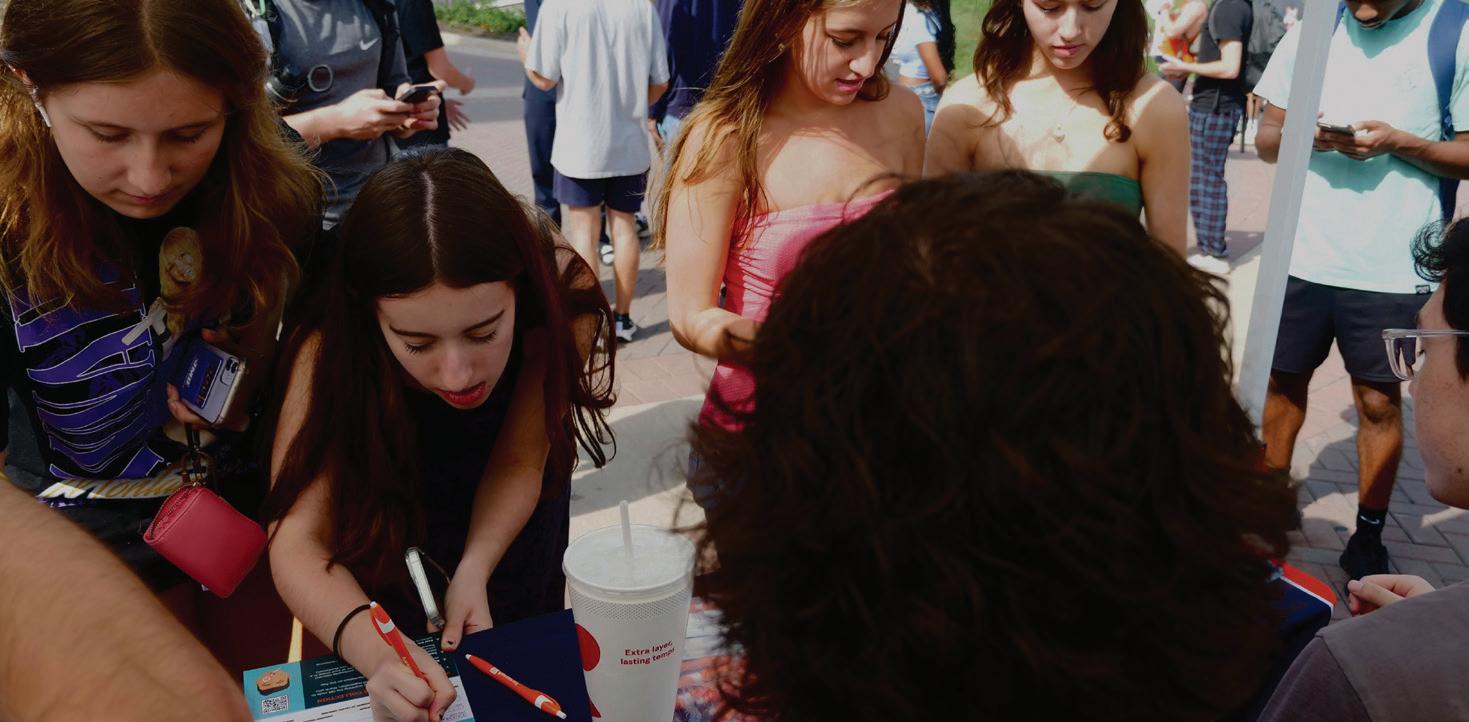
Kappa Alpha Order had the same aim the year before: affecting lives on a meaningful, personal level through its achieved goal of raising $20,000 to purchase a wheelchair for a veteran in need. The act of philanthropy becomes less of a competition or brag, and more of a lifestyle that changes the hearts of those participating in the cause. Tri Delta’s Herman puts it succinctly: “Events take on a bigger cause. When we raise money, it’s not just, ‘How much can we raise?’ It's like, ‘What are we doing with this money and where is it going?’”
Hantzopoulos had never really been involved in philanthropy until she joined Phi Mu. She didn’t even want to rush, which changed once she learned about the philanthropic aspect, and now even thinks it’s “what makes sororities extremely beneficial.”
Ultimately, the reason these organizations matter — the ways they make a positive difference — starts with each individual chapter and the respective sisterhoods or brotherhoods. From there, the love and service radiates throughout campuses and communities, even on a national level. Alpha Epsilon Pi is a prime example of this with its annual philanthropy event, AEPalooza: an outdoor food and music festival. This event does so well that the Virginia Tech chapter reached out to start hosting the same event at its university.
Each fraternity and sorority at JMU possess and embody specific values including friendship, self-sacrifice, honor, respect, excelsior and many others. Still, one of the most common, and the one that stands out, is truth. The truth of these organizations is, regardless of the stereotypes, these groups provide members with a community, a friend circle and even a family that’s rich with the resources and opportunities to empower members in personal, professional, leadership, social and service endeavors.
Delta Sigma Phi’s McGraw says it best: “What’s really apparent at our events is how badly everyone wants to be here.”
So the question I leave you with is, why wouldn’t you?
CONTACT Katie Runkle at runklekr@dukes.jmu.edu. For more editorials regarding the JMU and Harrisonburg communities, follow the opinion desk on X @ TheBreezeJMU and on instagram @BreezeJMU.

ELLA WARREN contributing columnist
Editor‘s note: The Breeze adheres to the AP Stylebook, which does not use the Oxford comma.
Do you care about your money? If so, you should also care about your grammar; a missing comma could cost your future company millions of dollars. Such was the case for Oakhurst Dairy, a company in Portland, Maine, that paid $10 million to three delivery drivers who argued they were snubbed several years’ worth of overtime pay because of a missing Oxford comma in the state’s law. To avoid similar misunderstandings, the Oxford comma should be the standard — not an optional stylistic addition.
The rules governing grammar are often subjective. Commas are one of grammar’s most contentious elements, but no punctuation is more controversial than the Oxford comma, which is placed between the penultimate and last items in a list. For example, if you were sending a text to request the purchase of “milk, eggs, macaroni and cheese, and crackers,” you technically don’t need to include the comma after “cheese.” But without it, the recipient may not know whether you wanted “mac and cheese” or two separate items.
“I was going to make mac and cheese tonight, but now I can’t because you read my thing wrong,” writing, rhetoric and technical communication (WRTC) professor Scott Lunsford said. “It’s itty-bitty things like that.”
If the Oxford comma is so integral to clarity, why is it controversial? Originally, there was no extra comma before the conjunction — the “or,” “and” or “but” — until 1905, when Horace Hart required one in his style guide for the Oxford University Press, hence the name “Oxford” comma. As the largest university press in the world, the style guide was highly influential, and the Oxford comma caught on … kind of.
Some people see the extra comma as hypercorrect, redundant or insulting to the reader’s intelligence. Despite its origins in Britain, the Oxford comma is more commonly required by American presses nowadays, and languages such as French and German don’t use it at all. Different
style guides have different rules governing its use; the AP Stylebook, for example, doesn’t use the Oxford comma unless absolutely necessary.
“Even among us [WRTC professors], we don’t agree [on whether to use the Oxford Comma],” Lunsford said.
Rarely is a sentence more confusing without an Oxford comma. Sentences with an apposition — two or more adjacent nouns that refer to the same person or thing — are often cited as a reason not to standardize the Oxford comma. For example: My group project includes “Nikki, a writer, and Sarah.” Am I working with Nikki, who’s a writer, or two named people and one unnamed writer? Omitting the Oxford comma may not make it clearer whether or not Nikki is the writer — reordering the sentence left as the only solution.
There are numerous examples in which adding an Oxford comma ensures absolute clarity, and clarity is essential in writing; some might even say it’s a matter of life or death.

Roger Casement famously wrote that he was “being hanged by a comma” after he was sentenced to be executed for treason based on the court’s interpretation of the Treason Act of 1351, which read: “giving to [the king’s enemies] aid and comfort in the Realm, or elsewhere, and thereof be probably attainted of open deed.”
The court omitted the comma after “elsewhere,” making it unclear whether “in the realm or elsewhere” referred to the location of the enemies or the person giving aid. Ireland was under English rule, and Casement had been in Germany attempting to gain support for Irish independence, which may not have counted as treason had “elsewhere” referred only to the enemies’ locations. The comma plays a role in around 10,000 appellate court decisions, giving a tiny mark huge power over people’s lives.
Consistency is another key aspect of writing, and commas should follow the same rules as other serial punctuations. Semicolons, for instance, are also used to separate items in a list, including the penultimate and last items. Maine’s law regarding overtime was rewritten with semicolons after O’Connor v. Oakhurst Dairy. Overtime didn’t apply to “the canning, processing, preserving, freezing, drying, marketing, storing, packing for shipment or distribution” of certain products. Whether “packing” referred to “packing for shipment” or “shipment” and “distribution” cost Oakhurst Dairy millions. From texted grocery lists to treason laws, the Oxford comma holds great influence over the coherence of a sentence. Many style guides encourage using the Oxford comma when it will prevent misinterpretation, but that’s so often it may as well be the standard. With huge amounts of money potentially at stake, something as small as a comma shouldn’t carry such a big risk.
CONTACT Ella at warre3ej@dukes.jmu.edu. For more editorials regarding the JMU and Harrisonburg communities, follow the opinion desk on X @TheBreezeJMU and on Instagram @BreezeJMU.
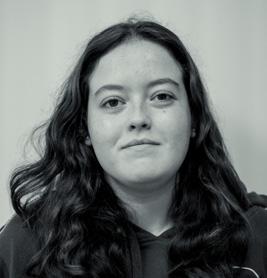
Most people get confused when they’re told that in the commonwealth of Virginia, you can get your driver’s permit at 15 ½ years old but can’t vote until 18 or legally drink until 21. This sparks a common argument in many places worldwide — specifically here in the United States — arguing, why is our adult age set at 18, and would it be beneficial to raise it?
Have you ever wondered why the legal adult age in the U.S. is 18? Well, that would be a question dating back to the 20th century. The Code of Virginia 1-204 decided the age of majority would be 18 years old in 1972 — 52 years ago. The main reason for lowering: to allow drafted individuals the right to vote. They also believed that 18- and 21-year-olds had about the same level of maturity.
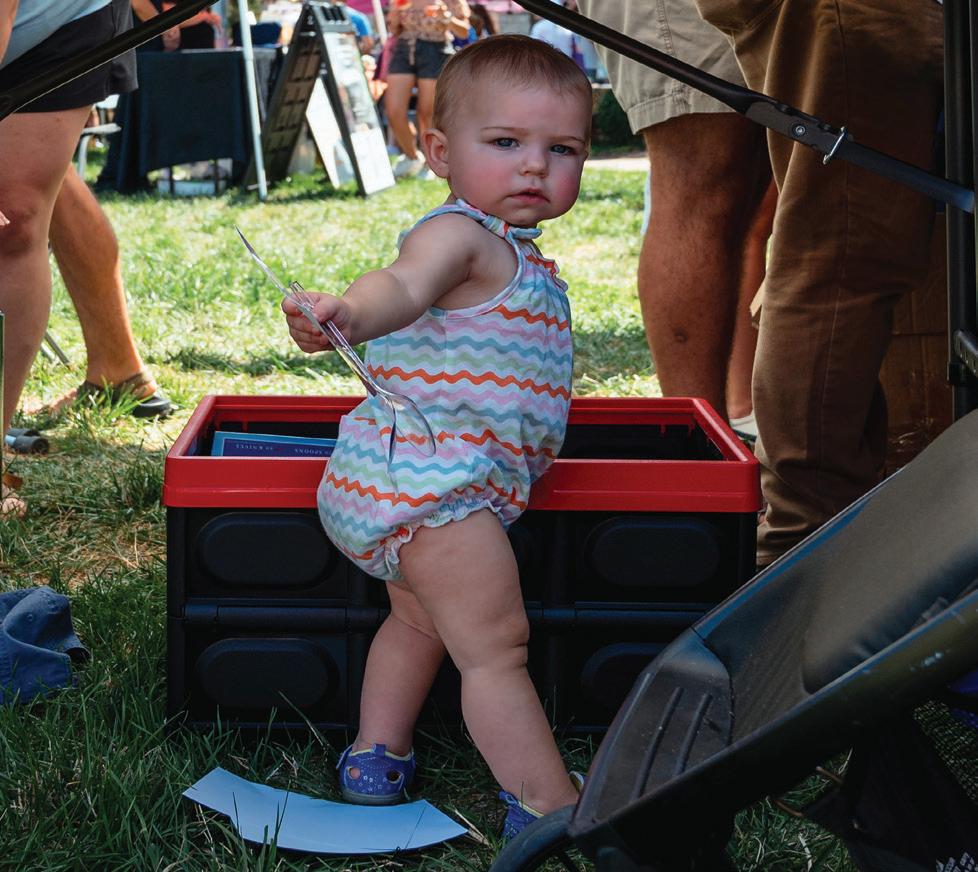
In other countries, the adult age ranges from 9 to 21 years old. Most countries with a majority age higher than 18 are located in Asia or in the continent of Africa. Take Japan, for example, its majority age is 20 years old; this was recently lowered to 18 for voting but 20 for the buying and possession of alcohol. Though it’s lower than in the U.S., when someone in Japan turns hatachi — the special word for “20 years old” in Japanese — they also gain the ability to drink alcohol legally, which makes more sense than waiting three years as an adult to have the same ability.
A reasonable age here in the States is 20 years old, like in Japan. Although it makes sense to coincide with high school graduation, 18 isn’t the age to make life-changing decisions due to processes still changing in the brain and neurons not having been fully surrounded by the protection of its myelin sheath.
According to an article written by Laurence Steinberg titled “Should the Science of Adolescent Brain Development Inform Public Policy?”, the brain undergoes many structural and functional changes during adolescence, altering teenage or young adult minds and making rational decision-making more difficult. It’s commonly heard that the brain doesn’t fully develop until 25 years old, so why allow 16-year-olds to operate vehicles alone on highways — or then two years later own a gun?
There are quite a few barriers for changing or deciding on a proper majority age. Steinberg states four ways of decision-making that could choose a good majority age: midpoint (between 18 and 21), issue-by-issue (are they mature enough?), three categories (child, adolescent or adult) and no boundaries. Deciding on a majority age is supposed to separate into less mature and more mature boundaries, but there should be a greater focus on the brain structure at this time.
Voting as someone in the younger generation — when older individuals are in office — is crucial to help recognize
diverse viewpoints. The U.S. made a great change when it switched the voting age to 18 years old, but some of its other policies are questionable, like the age to enter the draft or join the military being 18.
Do 18-year-olds really know what they’re getting into when they sign up for the draft? What if as their brain matures, they change their minds but are too far in?
Of course, people change what they want to do all the time, but it might not happen as much if we weren’t encouraging 18-year-olds to choose their futures. Adolescents need more time to make rational decisions while their brains are still developing.
“I cannot see myself doing anything other than music,” said Nate Domine, a freshman music major, when asked if he felt confident in his choice of major at such a young age. “It was easy for me because I got into music in sixth grade, but it’s definitely situational for everyone.”
The School of Music typically requires more credits for each major than anything else offered at JMU, which makes the decision more important to make earlier on to graduate on time but is hard to reverse.
“Mentally, [18-year-olds] are still children, since our brains don’t fully develop until we’re 25; so, by that logic, you can consider people adults at 25,” Domine said on the commonly accepted adult age.
Being 18 feels nothing like being an adult, and it really shouldn’t in the first place. As the brain is still maturing, adolescents are more likely to make decisions they will regret or change their opinions on in the future. It makes a lot more sense to push back the majority age by a few years to let 18-year-olds transition into an actual adult.
CONTACT Emma at flynn3en@dukes.jmu.edu. For more editorials regarding the JMU and Harrisonburg communities, follow the opinion desk on X @TheBreezeJMU and on Instagram @BreezeJMU.



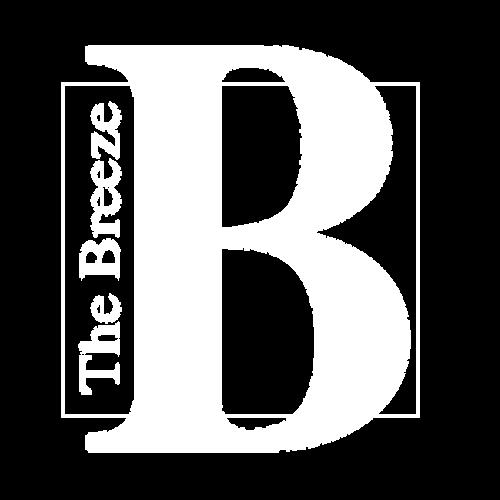
EDITOR-IN-CHIEF Eleanor Shaw breezeeditor@gmail.com
NEWS EDITORS
K. Mauser & Libby Addison breezenews@gmail.com
COPY EDITORS
Mallory Evans & Hannah Kennedy breezecopy@gmail.com
PRINT MANAGING EDITOR Morgan Blair breezepress@gmail.com
CULTURE EDITORS Abby Camp & Sixuan Wu thebreezeculture@gmail.com
PHOTO EDITORS Kailey Garner & Landon Shackelford breezephotography@gmail.com
ONLINE MANAGING EDITOR Kasey Thompson thebreezeweb@gmail.com
SPORTS EDITORS Hayden Hundley & Preston Comer breezesports@gmail.com
AUDIENCE EDITORS Madalyn Cornwell & Madeline Buynak thebreezesocials@gmail.com
Advertising Staff CREATVE DIRECTOR Sam Rhinard
OPINION
Maya Skurski breezeopinion@gmail.com
ART DIRECTOR Ella Austin thebreezeartdirector@gmail.com
TV NEWS DIRECTOR Alexa Bonilla jmubreezetv@gmail.com
CORRECTION (Oct. 22): The Sex in the Dark article has been updated to reflect the correct date on which a subsequent sex education event was held.
Subscribe to our newsletter:
Apply to join our team:


Eunoia Theatre launches Harrisonburg premiere of “What the Constitution Means to Me”
Dukes gear up for Homecoming showdown against Southern Miss this weekend
Dukes enjoy free snow cones, lawn games and music at JMU Alumni Association celebration ahead of Homecoming

Tune in to Breeze TV LIVE every Friday at 3:30 p.m.

Los Angeles Times Daily Crossword Puzzle
Edited by Patti Varol
ACROSS
By Adam Aaronson




Madison Marketplace is open for business, and all text-only listings are FREE ! Post job listings, announcements, rentals and more using our online placement tool. Ads run two weeks online and in two print editions.
I have 2 properties. One is short term, VRBO, ID # 2574384 . The other is mid term ,Furnished Finder ID# 521465. Both are located just north of Harrisonburg, call 540-820-3838

The Breeze, JMU’s award-winning student media organization, seeks a student graphic designer for print and online advertising. Job requirements include creating ads fro clients, collaboration with Advertising coordinator, page layout and design. Must be deadline oriented. Knowledge of Adobe software and previous design experience. EOE. Apply at jobs.jmu.edu

Skye Peterson - ALL THE DIFFERENCE TOUR with Graham Jones
Skye Peterson - ALL THE DIFFERENCE TOUR with Graham Jones 7 PM October 26 - Harrisonburghttps://www.songsforvalley.org/
Josh Garrels - IN CONCERT with Taylor Leonhardt
Josh Garrels in Concert with Taylor Leonardt 7 PM Friday November 15 - Harrisonburg https://www.songsforvalley.org/

Is laundry not your favorite chore? Let us help. We offer first time clients a rate of 1.25 per pound pick up and delivery. Weekend spots only available. https://soapandsuds.carrd.co/ (703) 233-0311
Personal delivery service. Last min shopping pickup. marketplace treasures. Distance is not an issue we charge 1.50 per mile from pick up location to your door. Weekends and Mondays are being offered at the moment. A schedule is best but we try and make every pickup possible. (703) 233-0311


CITY OF HARRISONBURG, VA
multiple part-time and full-time positions available.
Start gaining experience in your desired career field or simply earn some extra cash for the school year!
Visit www.harrisonburgva.gov and click on employment for more details.
Fear Forest of Harrisonburg is currently seeking a SFX makeup artist. Pay is $50 per night. Negotiable rate based on experience. Airbrush equipment and makeup is supplied. Interested candidates must be able to provide pictures or portfolios to showcase skill. Please email info@fearforest.net for additional information.

Career Opportunity - 911 Emergency Communications Officer
Have you ever thought about becoming a first responder in public safety but desire a position that is office-based? Consider applying with the Harrisonburg-Rockingham Emergency Communications Center (HRECC) to become a 911 Emergency Communications Officer. No prior experience is required (on-the-job training is provided).
Career Opportunity: Software Portfolio Specialist (Information Technology)
Join the Harrisonburg-Rockingham Emergency Communications Center (HRECC) as the Software Portfolio Specialist (IT) and play a vital role in supporting the systems that help the HRECC team bridge distress to safety, supporting the link between our community and the emergency services they rely on. For More Information: https://www.harrisonburgva.gov/ employment. EOE.

